Content on this page:
Content on this page:
Evaluation
SEVERITY ASSESSMENT OF ULCERATIVE COLITIS
The clinical severity and anatomical extent of an acute attack of ulcerative
colitis determine the therapeutic approach. The disease severity can be
assessed using several disease activity indices (eg Truelove and Witts
criteria, Mayo Clinic index, Sutherland index).
Endoscopic Scoring
Endoscopic scoring is used for standardization of care to guide
treatment decisions with the aim of achieving mucosal healing. Consider
endoscopic remission (mucosal healing) if with MES ≤1 and the absence of rectal
bleeding.
Mayo Endoscopic Score
(MES):
- Normal or inactive disease (normal mucosa): 0
- Mild disease (erythema, decreased vascular pattern and mild friability): 1
- Moderate disease (marked erythema, lack of vascular pattern, friability and erosions): 2
- Severe disease (spontaneous bleeding and ulcerations): 3
Severity
Assessment
|
Mild |
Moderate |
Severe |
|
|
Bloody stools/day |
<4* |
4-6 |
≥6 and |
|
Toxicity |
|||
|
Pulse |
<90 bpm |
≤90 bpm |
>90 bpm or |
|
Temperature |
<37.5°C |
≤37.8°C |
>37.8°C or |
|
Hemoglobin (Hb) |
>11.5 g/dL |
≥10.5 g/dL |
<10.5 g/dL or |
|
Erythrocyte Sedimentation Rate (ESR) |
<20 mm/hr |
≤30 mm/hr |
>30 mm/hr or |
|
or C-reactive Protein (CRP) |
Normal |
≤30 mg/dL |
>30 mg/dL |
| Reference: Sturm A, et al. ECCO-ESGAR guideline for diagnostic assessment in IBD part 2: IBD scores and general principles and technical aspects. Mar 2019. *Stools may be with or without blood according to the American College of Gastroenterology and the Japanese Society of Gastroenterology |
|||
Histological Scoring
- Active disease, if with the presence of neutrophils within the crypt epithelium and crypt lumen, and erosions and ulcers
- Mucosal healing, if there is partial resolution of the crypt architectural distortion and of the inflammatory infiltrate, but the mucosa will still show some features of sustained damage (decreased crypt density with branching, shortening of crypts), and decrease in basal plasmacytosis
- Histological remission, if with evidence of normalization of bowel mucosa
DISEASE EXTENT OF ULCERATIVE COLITIS
The anatomical extent of ulcerative colitis is assessed endoscopically. This is defined by the maximal macroscopic
extent during colonoscopy. This determines treatment modality whether oral and/or
topical, and determines onset and frequency of surveillance.
Montreal Classification of Extent of Ulcerative Colitis
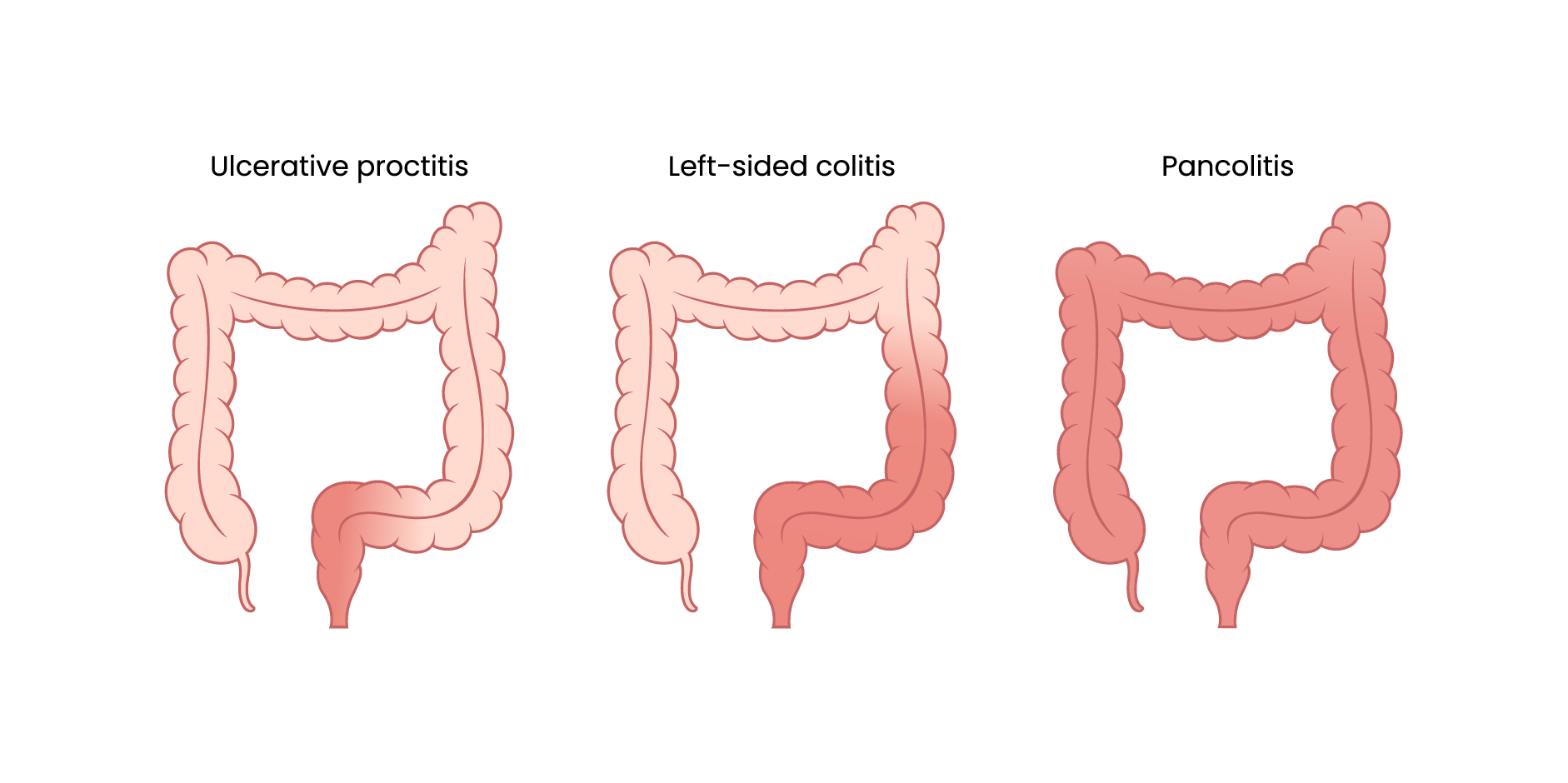 Inflammatory Bowel Disease_Management 1
Inflammatory Bowel Disease_Management 1Proctitis
Proctitis involvement is limited to the rectum (proximal extent of inflammation is distal to the rectosigmoid junction). This has the same risk of developing colorectal cancer (CRC) as the population and a ten-year colectomy rate of 5%.
Left-sided (Distal) Colitis
A left-sided (distal) colitis is limited to below the splenic flexure and therefore may be reached by topical therapy. This has an intermediate risk of developing colorectal cancer but the risk increases as the duration of the disease increases and has a ten-year colectomy rate of 8%.
Extensive Colitis (Pancolitis)
An extensive colitis is a colitis that extends proximal to the splenic flexure, including pancolitis and therefore requires systemic therapy. This has the highest risk of developing colorectal cancer with a ten-year colectomy rate of 19%.
SEVERITY ASSESSMENT OF CROHN’S DISEASE
Crohn’s disease severity is generally more difficult to determine than ulcerative colitis. Majority of patients will present with non-penetrating, non-stricturing disease and approximately 50% of patients will develop intestinal complications (eg abscess, fistula, phlegmon, stricture) within 20 years of diagnosis. Patients with ileal, ileocolonic or proximal GI involvement are more likely to develop intestinal complication compared to patients with isolated colonic disease. The factors which are associated with a high risk of progressive disease include initial extensive bowel involvement, ileal or ileocolonic involvement, perianal and severe rectal disease, younger age at diagnosis, presence of extraintestinal manifestation at diagnosis and presence of penetrating stenotic disease. High risk patients include patients who failed to respond to glucocorticoids or who have relapsed after achieving clinical remission after induction therapy with glucocorticoids. Perianal disease may indicate a more severe clinical course of Crohn’s disease. Patient with perianal fistulizing Crohn’s disease have an increased risk of colorectal cancer and cancers in the perianal region referred to as perianal fistulizing CD-associated anorectal and fistula cancer.
The disease activity reflects the combination of symptoms and endoscopic findings while prognosis is the compilation of factors predictive of a benign or more complicated course with a higher chance of surgery and or disease-related severity. Crohn’s disease severity is generally more difficult to determine than ulcerative colitis. The Crohn’s Disease Activity Index (CDAI), the Harvey-Bradshaw Index (HBI) and Perianal Disease Activity Index (PDAI) are commonly used systems in describing disease severity.
The Crohn’s Disease Endoscopic Index of Severity (CDEIS) and the Simple Endoscopic Score for Crohn’s Disease (SES-CD) are validated and reproducible scoring systems for measuring luminal endoscopic activity.
- SES-CD score 0-2: Endoscopic remission
- SES-CD score 3-6: Mild endoscopic activity (limited aphthous erosions involving <10% of the surface area and or altered vascular pattern, erythema and edema affecting <50% of the surface area)
- SEC-CD score 7-15: Moderate endoscopic activity (erosions or superficial ulcers taking up >10% but <30% of the surface area)
- SES-CD score >15: Severe endoscopic activity (large ulcers >2 cm)
Patients with mild disease have lower risk of disease progression of
future surgery, no systemic signs of toxicity (eg fever, unintentional weight
loss, inability to tolerate oral intake), with normal to slightly elevated
biomarkers (eg CRP, calprotectin), limited anatomic involvement with scattered
aphthous erosions or few superficial ulcers and without severe endoscopic
lesions, strictures, fistulizing or perianal disease. Patients with moderate to
severe disease are those without response to treatment for mild to moderate
disease or with the presence of prominent symptoms (eg abdominal pain or
tenderness, fever, intermittent nausea or vomiting, significant weight loss),
elevated inflammatory markers (eg CRP, calprotectin), presence of anemia or
vitamin and mineral deficiencies, have larger or deeper ulcers, stricture or
extensive areas of disease on endoscopy and or evidence of structuring,
penetrating or perianal disease.
Mild to Moderate Disease (Corresponds to CDAI 150-220)
- Patient is ambulatory
- Able
to tolerate oral alimentation with:
- No manifestation of dehydration
- No sign of toxicity (high fever, rigors, prostration)
- No abdominal tenderness or painful mass
- No intestinal obstruction
- <10% weight loss
Moderate
to Severe Disease (Corresponds to CDAI 220-450)
- Fever
- Significant weight loss (>10%)
- Abdominal pain or tenderness
- Intermittent nausea/vomiting without obstructive findings
- Significant anemia
- May also refer to patients who failed to respond to treatment for mild to moderate disease
Severe
to Fulminant Disease (Corresponds to CDAI >450)
- High fever
- Persistent vomiting
- Evidence of intestinal obstruction
- Rebound tenderness or involuntary guarding
- Cachexia
- Evidence of an abscess
- Also describes patients with persistent symptoms despite outpatient treatment with corticosteroids or biologic agents
Principles of Therapy
ULCERATIVE
COLITIS
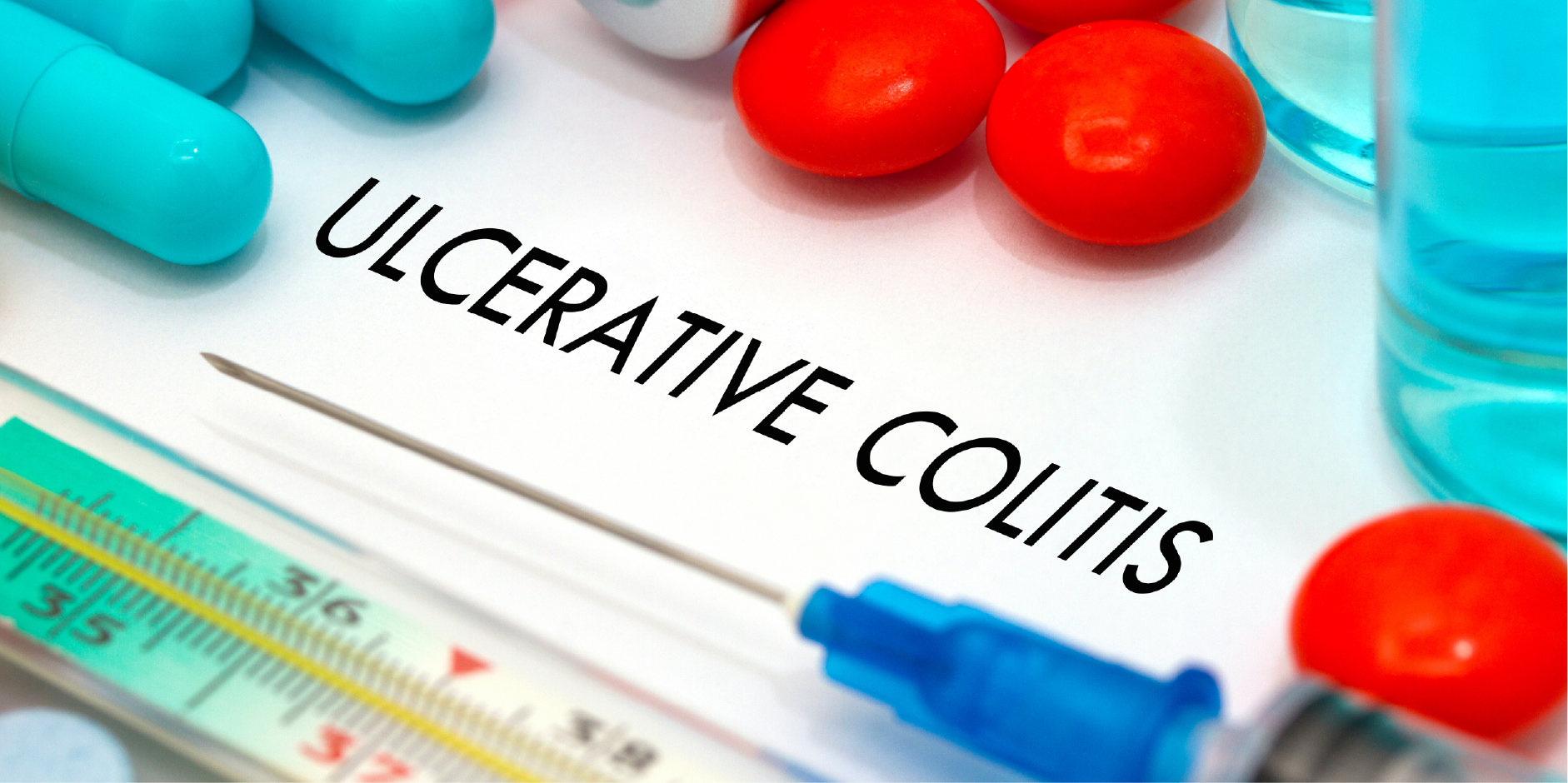 Inflammatory Bowel Disease_Management 2
Inflammatory Bowel Disease_Management 2The therapy decision for ulcerative colitis depends on disease location, severity, pattern of disease and presence of complications. This should be individualized based on patient preference, and the patient’s previous response and tolerance to therapy. The central features of management should include continuity of care, appropriate long-term follow-up and attention to general health concerns (eg physical, emotional, psychosocial and quality of life issues). In addition to evaluation of the extent and activity, a global assessment of the patient should include attention to extraintestinal manifestations. Infection (eg CMV, C difficile, other bacteria, parasites) should be ruled out prior to ulcerative colitis treatment and be treated accordingly.
Goals of Therapy
The goals of therapy for ulcerative colitis are to treat active disease and maintain remission. There is a target shift from symptom resolution alone to a combination of symptomatic and endoscopic remission (MES 0 or equivalent) or improvement (MES 0 or 1). An endoscopic remission achievement is associated with superior outcomes including lower risk of relapse or colorectal cancer and decreased need for corticosteroids, hospitalizations, or colectomy. These provide an improved quality of life and avoid disability. These decrease the need for long-term use of corticosteroids. These minimize the risk of cancer and other treatment-related complications. Patients should maintain good nutritional status.
CROHN’S DISEASE
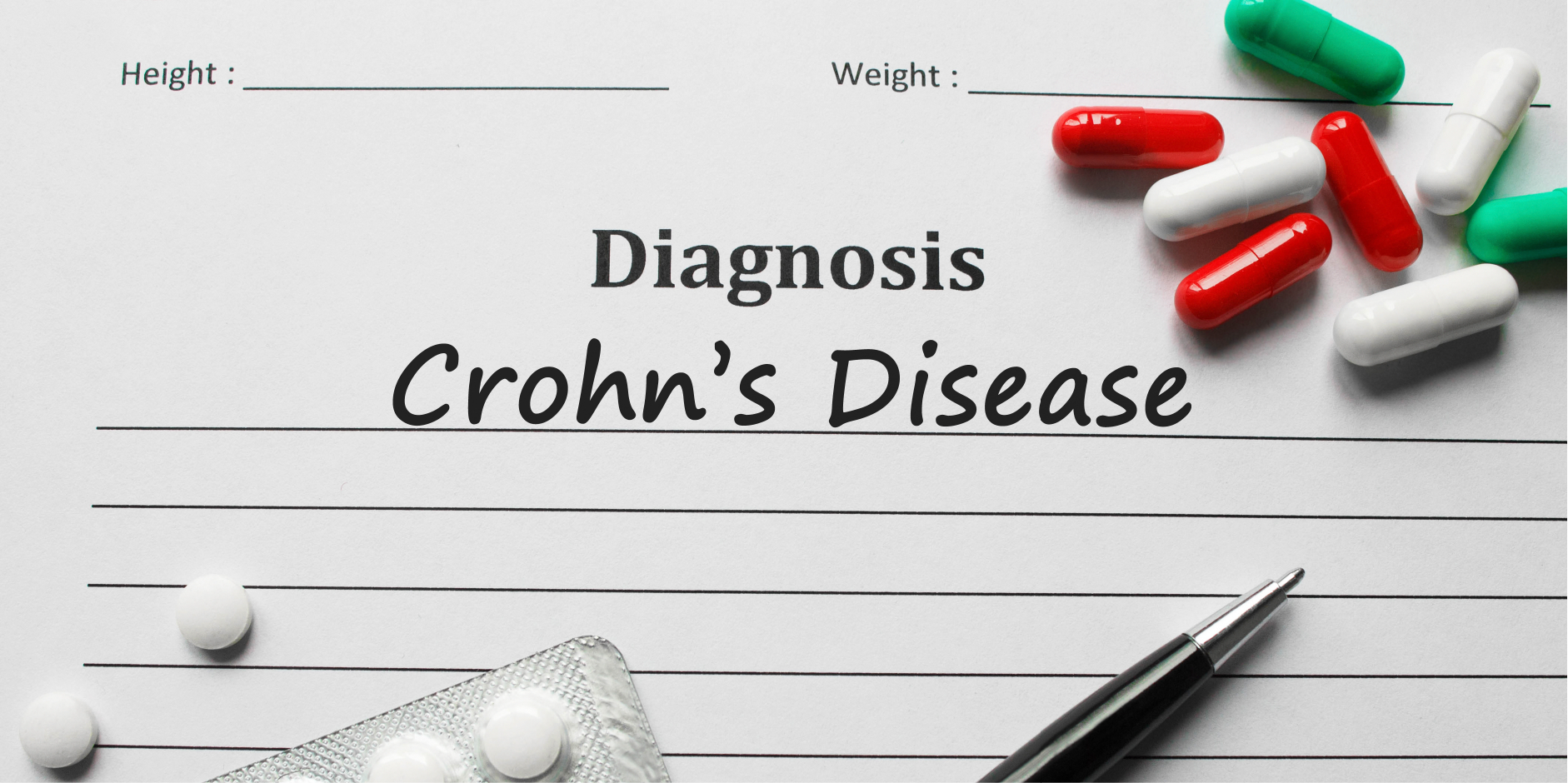 Inflammatory Bowel Disease_Management 3
Inflammatory Bowel Disease_Management 3Therapy decision for Crohn’s disease depends on disease site, pattern (inflammatory, stricturing, fistulating), severity, and presence of complications. This should be individualized based on the patient’s previous response and tolerance to therapy. The cost of the therapy should also be considered. The anatomic distribution of disease is important primarily for medications with targeted delivery systems (eg enteric-coated Budesonide). Medical therapy is categorized into induction and maintenance therapy. This includes use of corticosteroids, advanced therapies (anti-TNF agents, anti-integrins, anti-ILs, JAK inhibitors), dietary-based strategies and supportive care.
Clinical evidence of improvement should be seen within 2 to 4 weeks and maximal improvement should be evident within 12 to 16 weeks. Patients achieving remission or response should be transitioned to an appropriate steroid-sparing maintenance therapy. Patients with continued symptoms after induction therapy should be assessed to determine whether medication optimization, addition of other agents or transition to a different treatment strategy (either medical or surgical) according to their clinical status, disease activity, extent and behavior needed. In patients with mild to moderate Crohn’s disease who do not respond may try alternative treatment or may advance to treatment for moderate to severe Crohn’s disease based on their clinical status. Infection (eg CMV, C difficile, food poisoning) should be ruled out or active inflammation due to Crohn’s disease confirmed prior to treatment.
For mild to moderate Crohn’s disease, two approaches of treatment are recommended, although the merits of these strategies have not been extensively studied: Step-up therapy, starts with a less potent medication associated with fewer side effects. Once initial medications are ineffective, more potent therapies (potentially more toxic) are used. Top-down therapy, on the other hand, starts with more a potent medication (eg immunosuppressants, biologic therapy) early in the course of the disease before patients become corticosteroid dependent and even before administration of corticosteroids. This should be considered the standard of care for patients with active Crohn’s disease.
Anti-TNF monotherapy is preferred in the induction of remission for high-risk patients with moderate to severe Crohn’s disease who are >60 years of age, young male patients preferring to avoid thiopurines, those without history of Epstein Barr virus infection or those at increased risk for infectious complications or malignancy. A combination therapy with anti-TNF agents and an immunomodulator (eg Azathioprine, 6-Mercaptopurine or Methotrexate) is used for most patients with fistulizing (eg intestinal or perianal) moderate to severe Crohn’s disease. A combination therapy is preferred to treat Crohn’s disease through two different mechanisms of action and synergistic effect of the combination of drugs, to reduce immunogenicity against biologic agents which is highest when the biologic agent is first started and to improve the pharmacokinetics of biologic therapy. The options for patients who are no longer responding to anti-TNF therapy are to optimize dose of drug, switching to an alternative anti-TNF agent and switching to a different class of agents. Treatment with biologic agents is the principal therapy for anorectal Crohn’s disease.
Antibiotics are not used as primary therapy because they are not an effective treatment for luminal inflammatory Crohn’s disease. These may be used as an adjunctive therapy for patients with Crohn’s disease with complications (eg in combination with biologics or thiopurines to improve fistula closure, postoperative prophylaxis for patients with low risk of Crohn’s disease recurrence postresection, broad-spectrum antibiotics for treatment of pyogenic complications [eg intraabdominal, mesenteric or perianal abscess]) in patients with Crohn’s disease.
Goals of Therapy
The goals of therapy for Crohn’s disease are to induce and maintain control of symptoms, to achieve mucosal healing as determined by endoscopy, to provide an improved quality of life, and to minimize short- and long-term toxicity and complications. Treatment is considered as a sequential continuum to treat acute disease or induce clinical remission and then to maintain response or remission to improve quality of life.
Pharmacological therapy
ACTIVE MILD TO MODERATE PROCTITIS AND LEFT-SIDED (DISTAL)
ULCERATIVE COLITIS
Patients may be treated with either oral or topical medications. Some
patients achieve maximum benefit from the combination of oral and topical
therapy. The therapeutic effect of topical therapy is generally quicker and has
a less frequent dosing schedule than oral therapy. The choice of vehicle is
determined by patient preference and proximal extent of disease. Suppositories
can reach approximately 10 cm. Foam can reach approximately 15 to 20 cm and may
be used if suppositories are not available. An enema can reach up to the
splenic flexure.
Aminosalicylates
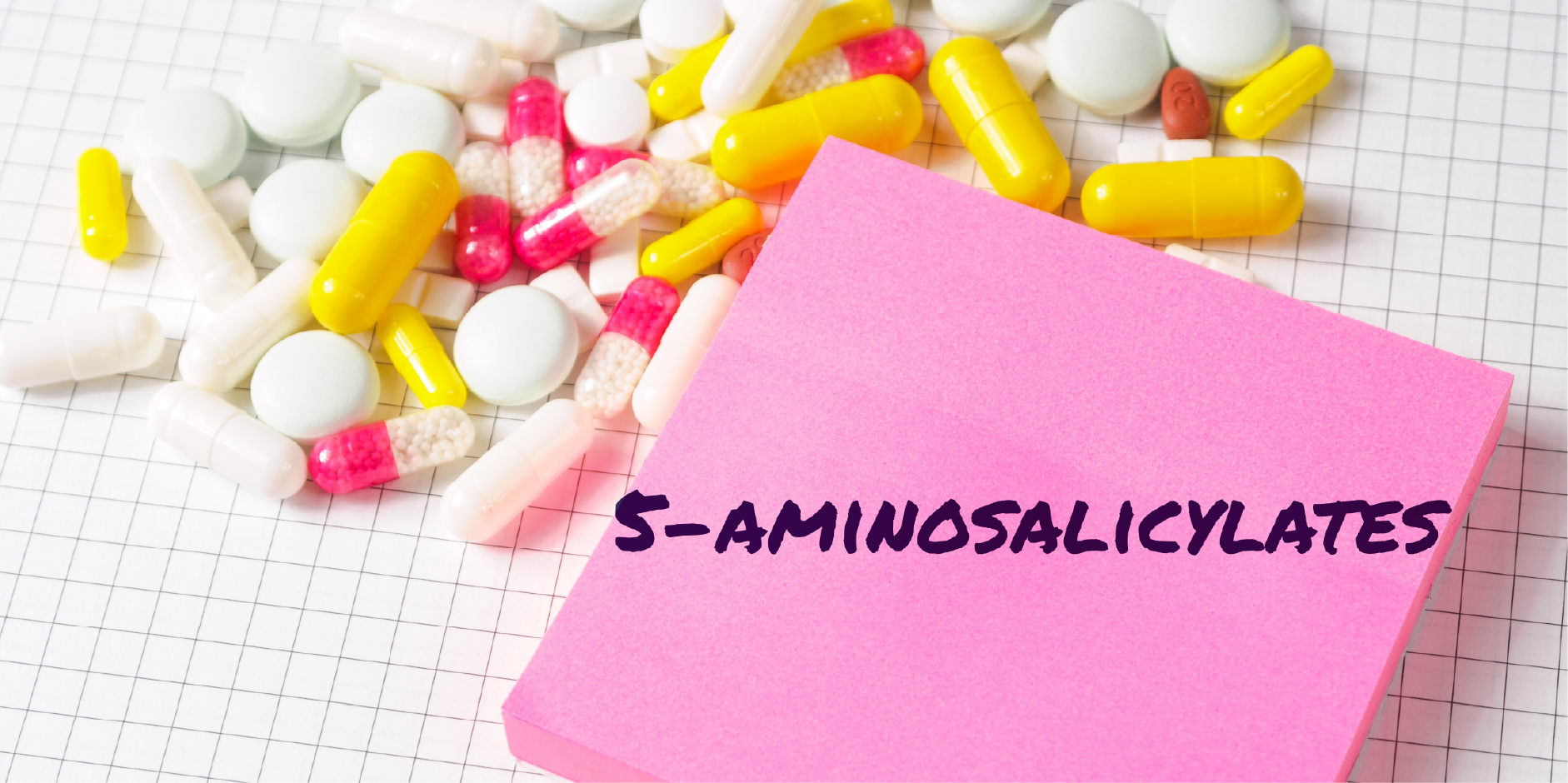 Inflammatory Bowel Disease_Management 4
Inflammatory Bowel Disease_Management 4Aminosalicylates are beneficial in achieving and maintaining remission. These are effective in 40-80% of patients, with effects generally seen in 2 to 4 weeks of therapy. The use of topical aminosalicylates is better than topical corticosteroids or oral aminosalicylates. The topical route can deliver much higher concentrations to the distal colon than oral compounds. Topical preparations can also provide quicker response times compared to oral preparations. There is no difference between foam and liquid enemas in the induction of remission or endoscopic healing. Aminosalicylate enema in combination with oral Mesalazine is the recommended initial treatment for mild to moderately active left-sided ulcerative colitis and is found to be more effective than oral or topical aminosalicylates, or topical steroids alone.
Mesalazine
Topical Mesalazine is the first-line treatment for mild to moderately active proctitis. Suppository is the preferred initial treatment for mild to moderately active proctitis because the drug is delivered specifically to the rectum and is better retained. Mesalazine suppositories are effective in the treatment of proctitis and maintenance of remission. Foam or enemas are an alternative for mild to moderately active proctitis. Topical Mesalazine is more effective than topical steroids in mild to moderately active proctitis and active left-sided ulcerative colitis.
A combination of topical Mesalazine and oral Mesalazine or topical steroid was found to be more successful in proctitis than when given alone. These may also be used as a treatment strategy for dose increases in proctitis. A combination of Beclomethasone dipropionate and Mesalazine enemas produced a significantly better clinical, endoscopic, and histological improvement compared to either agent alone. A combination of oral Mesalazine with topical Mesalazine is the first-line therapy for mild to moderately active left-sided ulcerative colitis. A combination of topical Mesalazine and oral Mesalazine is more effective for active distal colitis compared to either agent alone.
Topical Mesalazine may still be given to patients who are refractory to oral aminosalicylates or topical corticosteroids. Mesalazine enemas are effective in inducing and maintaining remission in distal colitis. Once-daily dosing of oral Mesalazine is recommended over multiple times per day dosing in patients with mild-moderate ulcerative colitis.
Balsalazide, Olsalazine
Balsalazide or Olsalazine, when combined with topical Mesalazine are effective first-line agents.
Sulfasalazine
Sulfasalazine has a higher incidence of side effects compared to newer aminosalicylates. Sulfapyridine component is absorbed and may cause side effects in 15-30% of patients. Majority of patients who are intolerant of Sulfasalazine are able to tolerate other aminosalicylates. Oral Sulfasalazine is as effective as oral Mesalazine but oral Mesalazine is better tolerated. Patients on long-term Sulfasalazine should be advised to take folic acid supplementation.
Corticosteroids
Systemic absorption and side effects of topical corticosteroids are lesser as compared with oral forms. These provide adequate suppression of inflammation with rapid relief of symptoms. These are the recommended treatment options for induction of remission in patients with active distal colitis. Topical corticosteroids (eg Hydrocortisone foam or enema) are effective in acute therapy of distal colitis but have not been proven effective in maintaining remission. Topical steroids are a treatment option for patients with proctitis with inadequate response or intolerance to topical and oral Mesalazine. Budesonide rectal foam was shown to induce remission by week six. Budesonide enema seems to be as effective as Hydrocortisone but with fewer side effects. These should be reserved for patients who failed Mesalazine enemas. These are less effective than topical Mesalazine and generally reserved for patients who cannot tolerate topical Mesalazine.
Patients Not Responding to Initial Therapy
Patients with refractory proctitis may be treated with systemic corticosteroids, immunosuppressants, and/or biologicals.
Corticosteroids (Oral)
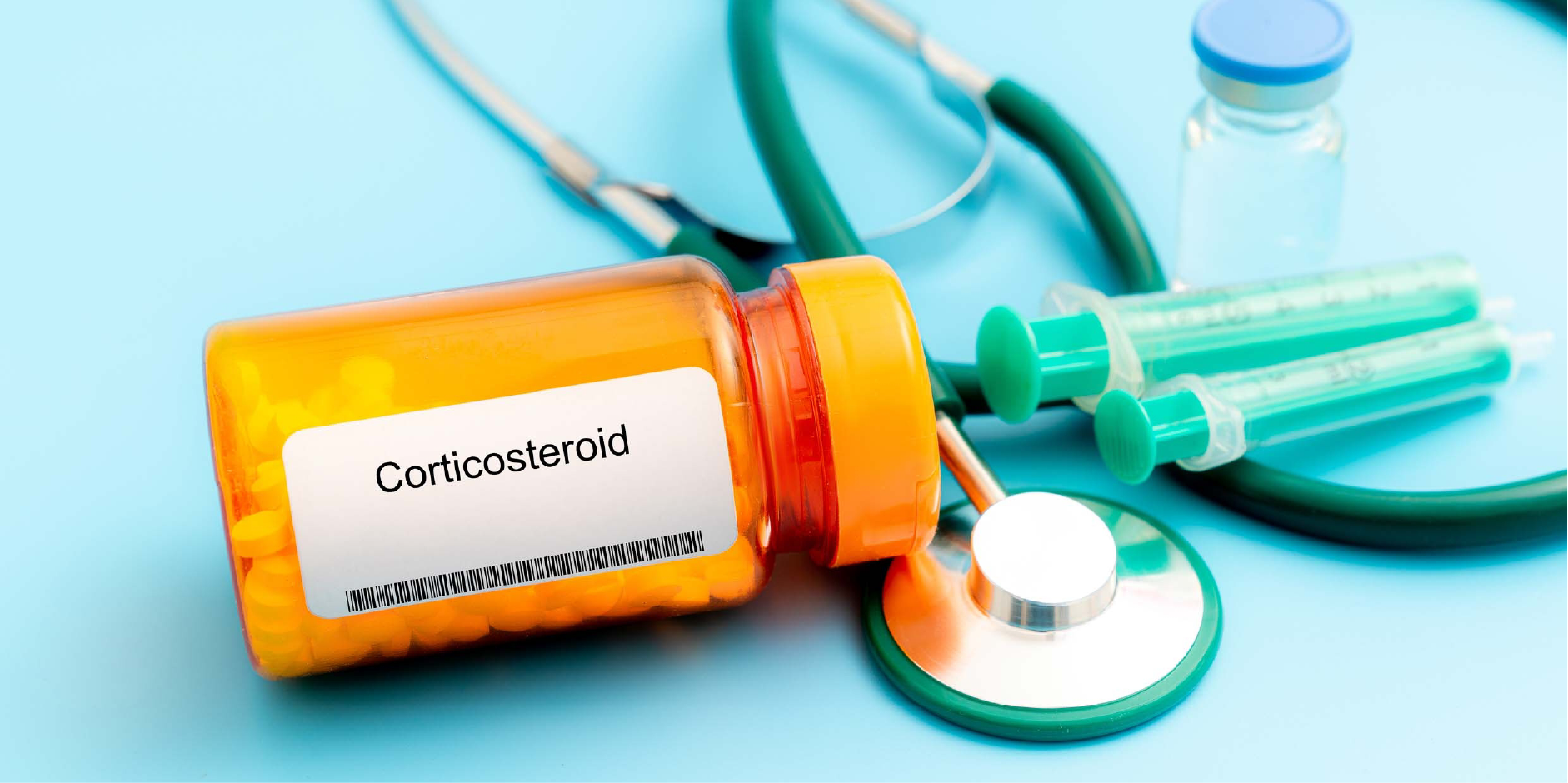 Inflammatory Bowel Disease_Management 5
Inflammatory Bowel Disease_Management 5Systemic corticosteroids may be used in patients with mildly active left-sided ulcerative colitis who do not respond to Mesalazine. An addition of oral steroids is recommended when a patient’s symptoms deteriorate, when there is persistence of rectal bleeding beyond 10 to 14 days, or when sustained relief from all symptoms has not been achieved after 40 days of appropriate Mesalazine therapy. Oral Prednisolone or once-daily Budesonide should be considered if the patient fails to respond to a combination of oral aminosalicylate and topical Mesalazine or topical corticosteroids. Oral once-daily Budesonide may be used in patients with mild to moderately active left-sided ulcerative colitis who are intolerant or refractory to optimized aminosalicylate therapy. Oral Beclomethasone dipropionate may be used as an alternative to Prednisolone in patients with mild to moderately active ulcerative colitis and refractory to Mesalazine. The dose may be reduced over an eight-week period once the patient responds to therapy. There is no evidence that supports chronic corticosteroid therapy as an effective agent for maintenance of remission.
Tacrolimus
Tacrolimus is recommended for patients with moderately active ulcerative colitis not responding to steroid therapy.
ACTIVE MILD TO MODERATE EXTENSIVE ULCERATIVE COLITIS
If inflammation extends beyond the reach of topical therapy, oral therapy is required. Oral therapy may be combined with topical therapy since this may benefit some patients with rectal symptoms.
Aminosalicylates (Oral)
Aminosalicylates are considered the first line of treatment.
Mesalazine
A combination of topical and oral Mesalazine was found to be more successful in achieving clinical remission at 8 weeks compared to oral Mesalazine alone. A combination of oral Mesalazine with aminosalicylate enema is the recommended initial treatment for mild to moderately active extensive ulcerative colitis.
Sulfasalazine
Traditionally, Sulfasalazine is the agent of choice for mild to moderate extensive colitis. This has similar efficacy with Mesalazine but Mesalazine has a better safety profile. The response is dose-related with up to 80% of patients who receive daily doses of 4 to 6 g manifesting clinical remission or significant clinical improvement within 4 weeks. These higher doses are related to increased side effects.
Patients Not Responding to Initial Therapy
In patients with moderate to severe ulcerative colitis, TNF inhibitors, Ustekinumab or Vedolizumab may be combined with thiopurines or Methotrexate rather than biologic or thiopurine monotherapy.
Corticosteroids (Oral)
Example drugs: Prednisolone, once-daily Budesonide or Beclomethasone dipropionate
Oral corticosteroids are reserved for patients who are refractory to oral aminosalicylates with or without topical therapy and for patients with troubling symptoms demanding rapid improvement. These may be used in patients with mildly active extensive ulcerative colitis unresponsive to Mesalazine. These are effective in the induction of remission in patients with moderate to severely active ulcerative colitis who are refractory to Mesalazine or Sulfasalazine, and in patients who have responded initially to IV corticosteroids for acute severe disease. Once remission is achieved, gradually taper the dose, usually over 8 weeks. Long-term use is associated with serious and potentially irreversible side effects. IV steroids are recommended for patients with moderately active ulcerative colitis and refractory to oral steroids.
Janus Kinase (JAK) Inhibitors
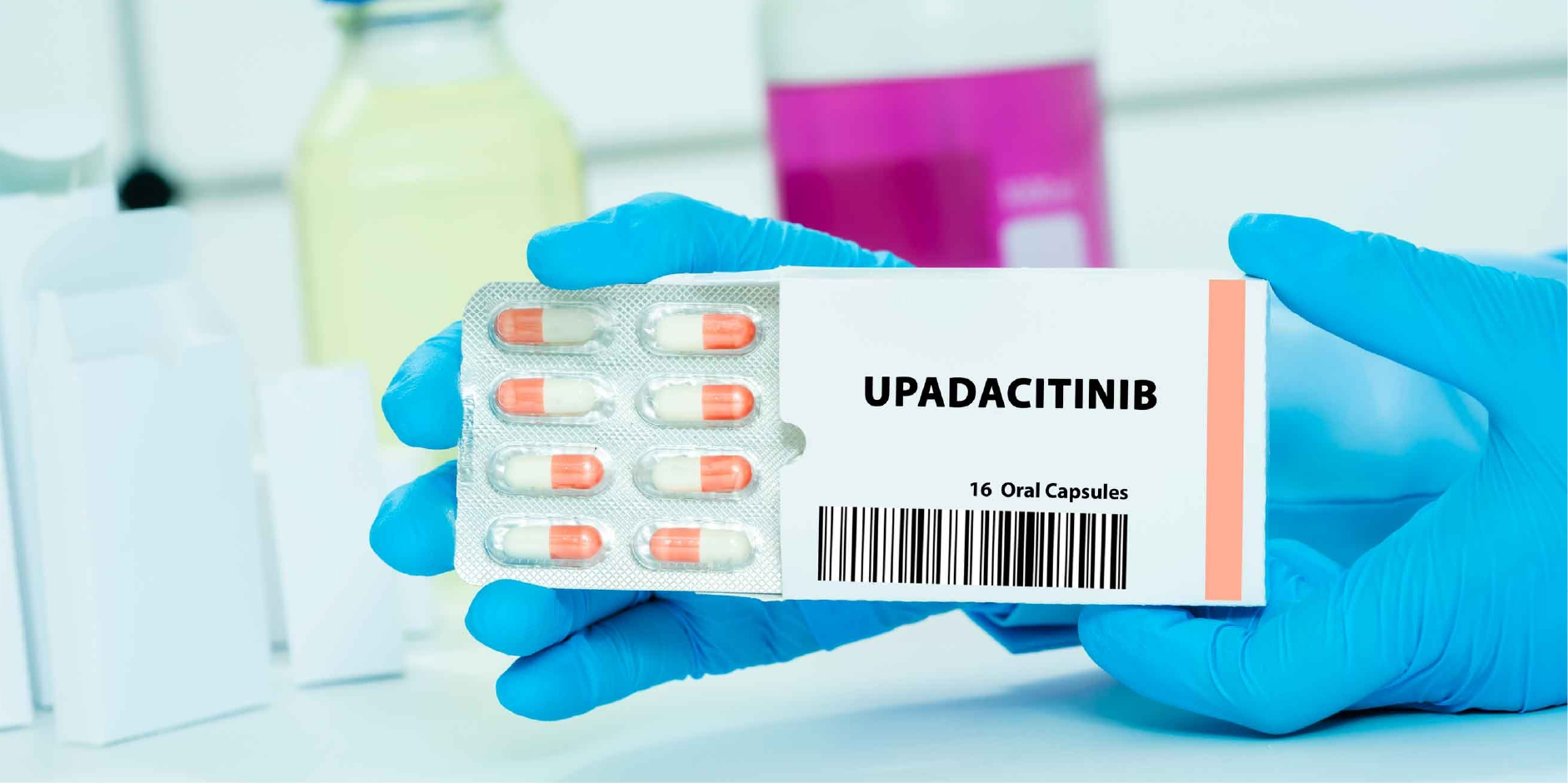 Inflammatory Bowel Disease_Management 6
Inflammatory Bowel Disease_Management 6Example drugs: Filgotinib, Tofacitinib, Upadacitinib
Janus Kinase (JAK) inhibitors are indicated for moderately to severely active ulcerative colitis in patients who have inadequate or loss of response or intolerance to either conventional therapy or biologic agents. These are only to be used at the lowest effective dose in the following patients if a suitable alternative agent is not available: Age of ≥65 years old, at increased risk of major cardiovascular disease (eg heart attack or stroke) or cancer, and current or chronic smokers. Use with caution in patients with risk factors for venous thromboembolism (VTE).
Tacrolimus
Tacrolimus is recommended for patients with moderately active ulcerative colitis not responding to steroid therapy.
Thiopurines
Example drugs: Azathioprine, Mercaptopurine
Thiopurines are end metabolite of thiopurine that exerts an antiproliferative effect on mitotically active lymphocyte populations. These may have direct anti-inflammatory properties by inhibiting cytotoxic T cell and natural killer cell function and inducing apoptosis of T cells. These are recommended in patients with chronic active corticosteroid-dependent disease. These are effective for patients who do not respond to oral corticosteroids but are not severely ill to require IV therapy. Due to Azathioprine's relatively slow onset of action, it may be appropriate to start it in patients with active ulcerative colitis where maintenance therapy with Azathioprine is considered, but only when given together with an effective induction agent.
Tumor Necrosis Factor (TNF) Inhibitors
Example drugs: Infliximab, Adalimumab, Golimumab
Tumor necrosis factor (TNF) inhibitors are recommended for patients with moderately active ulcerative colitis who are refractory to thiopurines. A combination of Infliximab with Azathioprine is more effective compared to Infliximab alone. These are also recommended for patients with moderately active ulcerative colitis who are steroid-refractory or steroid-dependent despite adequate doses of thiopurines. These are effective in obtaining and maintaining steroid-free remission in patients receiving corticosteroids at baseline. TNF inhibitors are recommended for induction of remission in patients with moderate to severe ulcerative colitis who are intolerant to or have inadequate response to conventional treatment. Infliximab may be used for induction of remission in patients with moderate to severe ulcerative colitis who are naive to biologic agent therapy.
Other Immunosuppressants
Basiliximab, Ustekinumab and Vedolizumab have shown to be beneficial for moderately active ulcerative colitis. Mirikizumab is a humanized monoclonal antibody targeting the p19 subunit of IL-23 which was approved for the induction of remission in patients with moderate to severe ulcerative colitis. Ustekinumab may be used for the induction and maintenance of remission in patients with moderate to severe ulcerative colitis who are intolerant to or have an inadequate response to conventional treatment. This may also be used for induction of remission in patients with moderate to severe ulcerative colitis previously treated with Infliximab, especially primary non-responders to induction therapy. Vedolizumab is recommended for induction of remission in patients with moderate to severe ulcerative colitis who are refractory or intolerant to thiopurines or to anti-TNF. This may also be used for induction of remission in patients with moderate to severe ulcerative colitis who are naive to biologic agent therapy. This is preferred for patients at higher risk of infection or malignancy (eg older patients, with a recent history of serious infection [eg pneumonia] or with history of malignancy). Etrasimod is an oral sphingosine-1-phosphate (S1P) receptor modulator that was approved for the induction of remission of moderately to severely active ulcerative colitis in adults who are intolerant or have an inadequate response to conventional therapy. Ozanimod is an oral S1P receptor modulator indicated for the treatment of moderately to severely active ulcerative colitis in adults.
MAINTENANCE OF ULCERATIVE COLITIS REMISSION
Once the acute ulcerative colitis attack is controlled, a lifelong maintenance regimen is usually required especially if the patient suffers left-sided or extensive or relapsing disease. Medication discontinuation may be considered in those with distal disease who have been in remission for 2 years and are averse to the medication. There is some evidence that maintenance therapy reduces the risk of colorectal cancer and this should be considered. Patients in full remission after 4 years may consider cessation of therapy, although a small benefit may persist even after 6 years. The choice of maintenance therapy is determined by the treatment used to induce remission during the most recent flare, extent of disease, course of the disease (frequency and intensity of flares), severity of the most recent flare, failure and adverse effects of previous maintenance therapy, safety of maintenance therapy and cancer prevention. The stepwise escalation of maintenance treatment is achieved by increasing the dose of oral or rectal aminosalicylates, adding of thiopurine, adding of anti-TNF and adding of immunosuppressant.
Aminosalicylates (Oral)
All aminosalicylates are effective in reducing relapses. The initial therapy includes combination of oral Mesalazine or Sulfasalazine and Mesalazine or corticosteroid enemas. A combination of oral and topical agents is more effective than oral drugs alone. A combination of oral and rectal Mesalazine may be a second-line maintenance treatment. Balsalazide and Mesalazine should be considered first-line agents over Sulfasalazine because of lesser side effects. Mesalazine is the first-line maintenance treatment in patients responding to Mesalazine or steroids. Rectal Mesalazine is the first-line maintenance therapy in proctitis and an alternative therapy in left-sided colitis. Long-term maintenance therapy with Mesalazine is recommended to reduce the risk of developing colorectal cancer.
Corticosteroids (Oral)
Oral corticosteroids are generally ineffective in maintaining remission. These should not be used chronically and doses are tapered over 60 days once clinical improvement is observed in patients. Budesonide may be used for short-term (ie 3 months) maintenance of remission.
Thiopurines
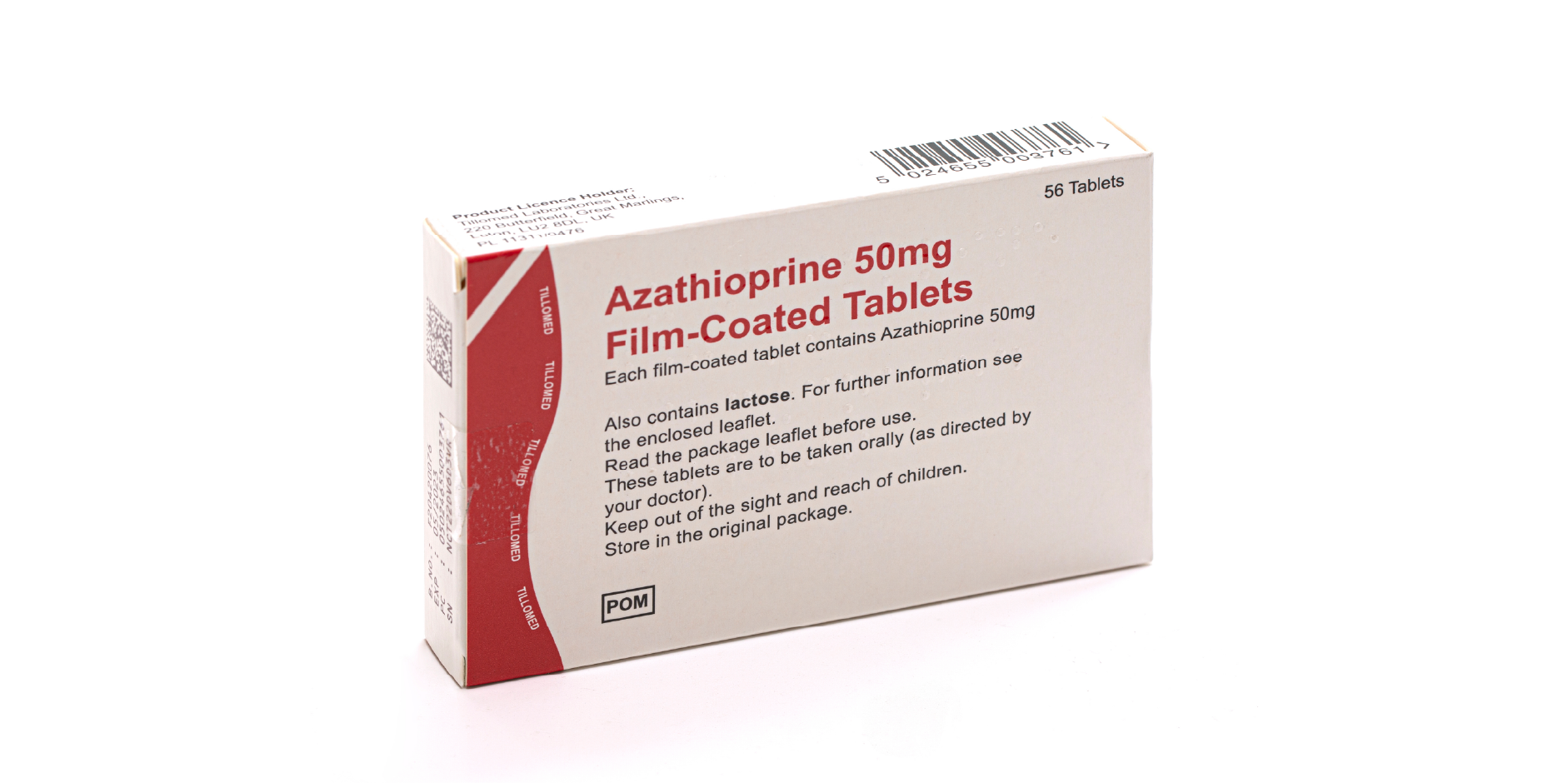 Inflammatory Bowel Disease_Management 7
Inflammatory Bowel Disease_Management 7Example drugs: Azathioprine, Mercaptopurine
Thiopurines are effective in maintaining remission regardless of disease distribution. These are considered first-line steroid-sparing agents for steroid-dependent patients. These are recommended for patients with mild to moderately active ulcerative colitis who experienced early or frequent relapse with an optimal dose of Mesalazine or intolerant of Mesalazine, patients with steroid-dependent disease, and patients responsive to Ciclosporin or Tacrolimus. These may be used as maintenance therapy for patients with severe relapse or frequently relapsing disease, those who require ≥2 corticosteroid courses within 12 months, relapses within 6 weeks of corticosteroid withdrawal, and those with severe ulcerative colitis who improved with Ciclosporin for induction of remission.
Tumor Necrosis Factor (TNF) Inhibitors
Example drugs: Adalimumab, Golimumab, Infliximab
Tumor necrosis factor (TNF) inhibitors are recommended for maintaining remission in patients with moderate to severe active ulcerative colitis who responded to induction treatment with the same drug. These have been found to be effective in inducing response and maintaining remission with or without thiopurines. Consider combination therapy with a thiopurine in patients who have failed treatment with ≥1 TNF inhibitors.
Janus Kinase (JAK) Inhibitors
Example drugs: Filgotinib, Tofacitinib, Upadacitinib
Janus kinase (JAK) inhibitors are recommended for maintaining remission in patients with moderate to severe active ulcerative colitis who responded to induction treatment with the same drug.
Mirikizumab
Mirikizumab is used for maintenance of remission in patients with moderately to severely active ulcerative colitis who were responsive to induction therapy with Mirikizumab.
Ustekinumab
Ustekinumab is recommended for maintenance of remission in patients with moderate to severe ulcerative colitis who were responsive to induction therapy with Ustekinumab.
Vedolizumab
Vedolizumab has also been found to be effective in inducing response and maintaining remission in patients with moderate to severe ulcerative colitis.
Etrasimod
Etrasimod is used for maintenance of remission in patients with moderately to severely active ulcerative colitis who were responsive to induction therapy with Etrasimod.
Ozanimod
Ozanimod is recommended for maintenance of remission in patients with moderately to severely active ulcerative colitis who were responsive to induction therapy with Ozanimod.
Probiotics
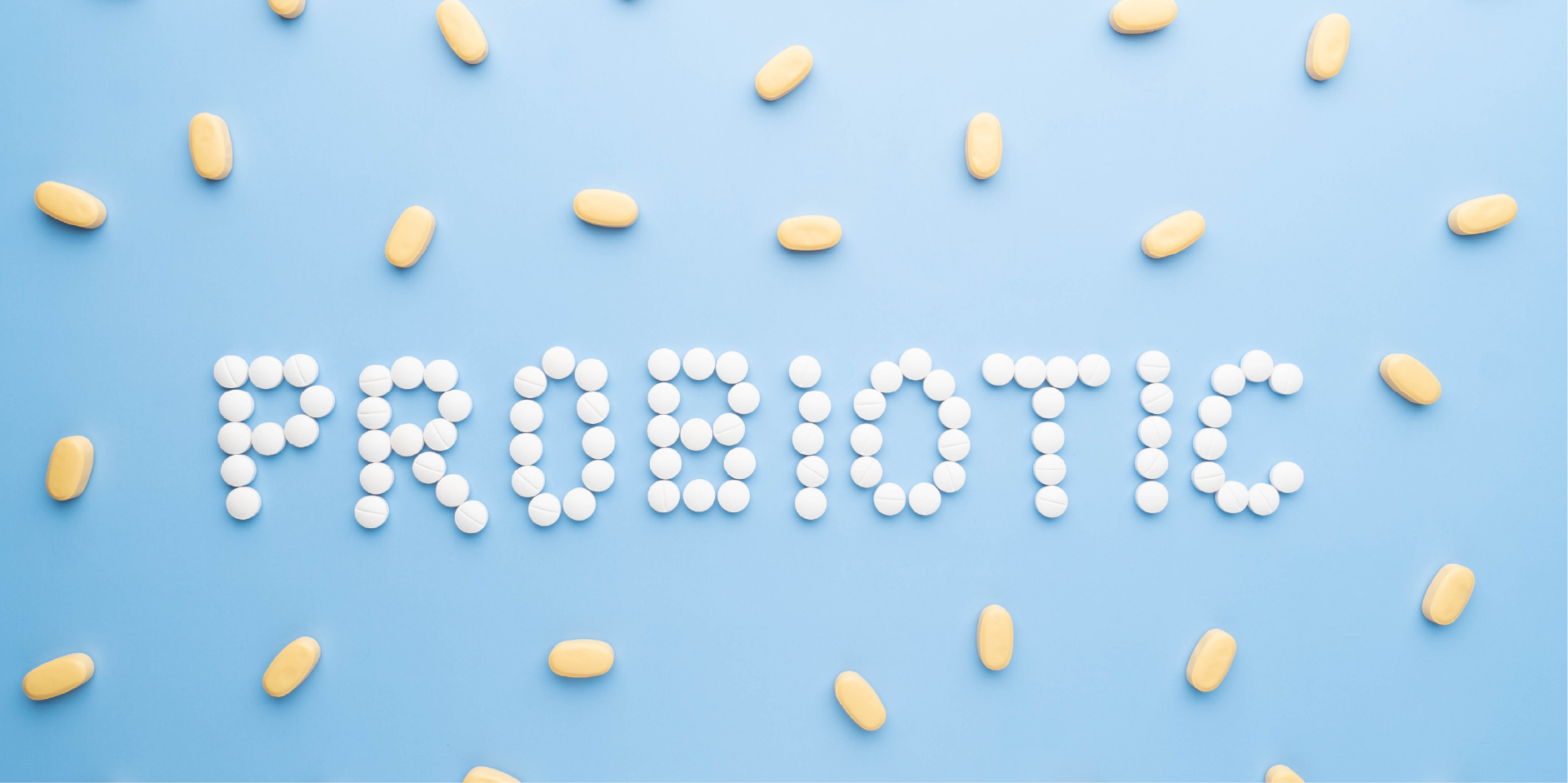 Inflammatory Bowel Disease_Management 8
Inflammatory Bowel Disease_Management 8Example of probiotics are Escherichia coli strain Nissle, VSL#3, Saccharomyces boulardii, and Bifido-fermented milk. Escherichia coli strain Nissle is recommended as an alternative to Mesalazine for the maintenance of remission of ulcerative colitis. These have been shown to be therapeutically equivalent to Mesalazine in preventing relapses in patients with inactive ulcerative colitis and for inducing remission in patients with active ulcerative colitis.
HOSPITAL MANAGEMENT OF SEVERE ULCERATIVE COLITIS
Supportive Therapy
Supportive therapy in severe ulcerative colitis includes intravenous fluid and electrolyte replacement to correct and prevent dehydration or electrolyte imbalance and blood transfusion to maintain a Hb of >10 g/dL. The withdrawal of anticholinergics, antidiarrheal agents, NSAIDs and opioid drugs which can precipitate colonic dilatation. Controlled trials failed to demonstrate the therapeutic benefit of administering antibiotics, especially in the absence of infections; however, there are protocols that recommend the administration of broad-spectrum antibiotics in patients with severe ulcerative colitis who have signs of toxicity or with worsening condition despite maximal medical therapy. Subcutaneous Heparin may be given to reduce the risk of thromboembolism. Total parenteral nutrition is needed if the patient is significantly malnourished.
Pharmacological Therapies
Corticosteroid (IV)
Example drugs: Methylprednisolone, Hydrocortisone
Intravenous corticosteroids are the mainstay of therapy in patient with severe colitis refractory to maximal oral treatment or who presents with toxicity. Intravenous Methylprednisolone at 40 to 50 mg/day may be used rather than other higher-dose IV corticosteroids. Less severely ill patients usually respond to IV corticosteroids within 7 to 10 days. Failure to demonstrate significant improvement with IV corticosteroids within 3 to 5 days is an indication for either colectomy or treatment with IV Ciclosporin or Infliximab. Long-term remission is significantly enhanced with the addition of long-term maintenance with Mercaptopurine.
Ciclosporin
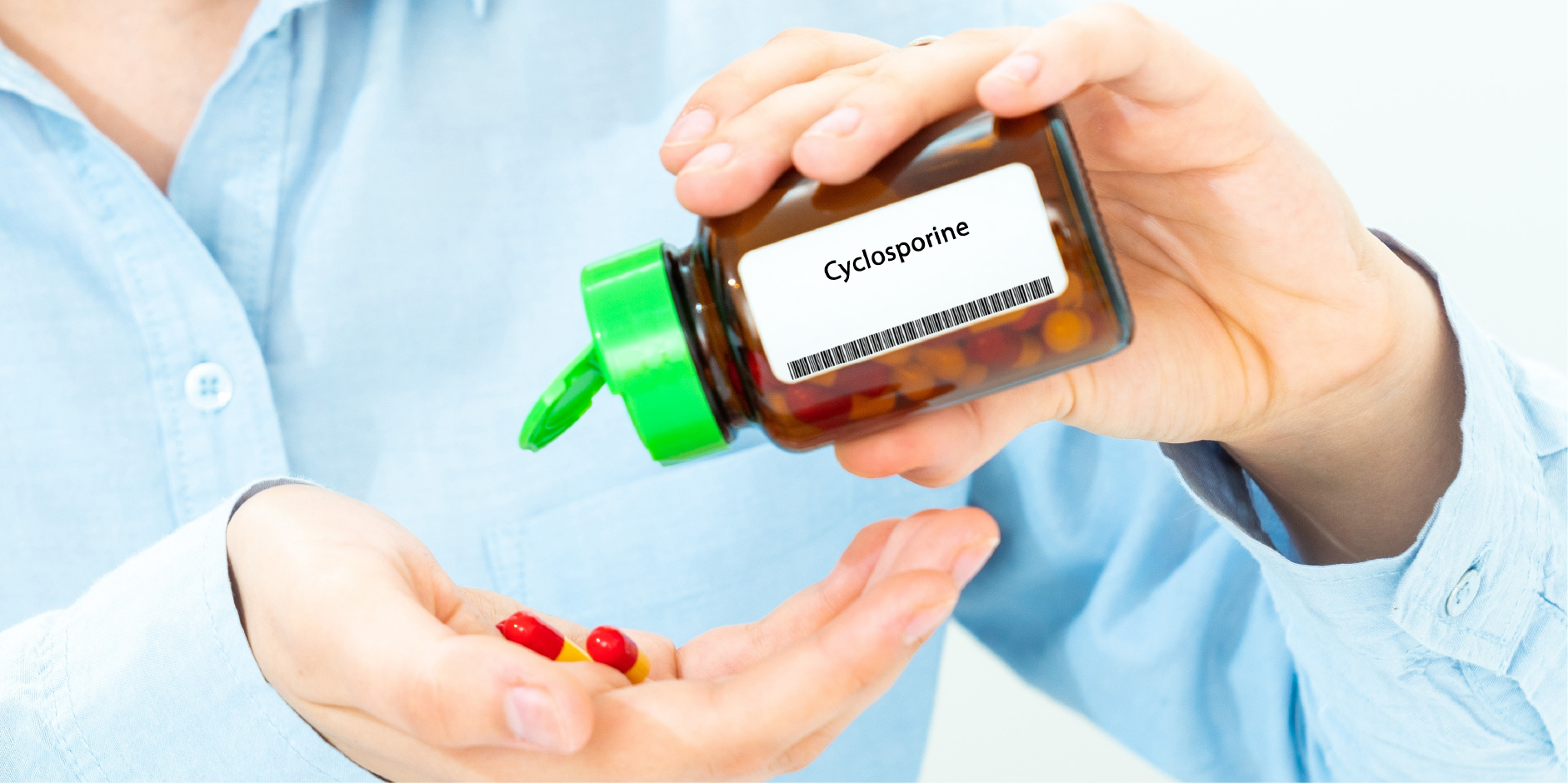 Inflammatory Bowel Disease_Management 9
Inflammatory Bowel Disease_Management 9Ciclosporin diminishes cytokine production and exerts an antiproliferative effect on lymphocytes. Intravenous Ciclosporin should be considered the first-line rescue therapy if there is no improvement after 3 to 5 days of intensive IV corticosteroid use, ie use in acute corticosteroid-refractory severe colitis. This is used as an alternative to corticosteroids in patients with adverse events due to steroids including patients with poorly controlled diabetes, with concomitant osteoporosis, or patients susceptible to steroid psychosis. This is suitable for patients who are not psychologically prepared for colectomy. Surgery is recommended if no response is seen in 4 to 7 days of salvage therapy. Patients with a good response who have not been previously treated with Azathioprine or Mercaptopurine may continue Ciclosporin for 3 to 4 months while introducing Azathioprine or Mercaptopurine. This should be avoided in patients with low cholesterol or magnesium due to increased incidence of neurological side effects.
Infliximab
A TNF inhibitor, Infliximab may be used in patients with severe ulcerative colitis refractory to maximal oral therapy with Prednisolone, oral aminosalicylates and topical agents who do not require urgent hospitalization. This is an effective salvage therapy in patients with severe ulcerative colitis and refractory to IV corticosteroids. A combination with Azathioprine has shown a synergistic effect. Surgery is recommended if no response is seen within 4 to 7 days of salvage therapy. This is not recommended as maintenance therapy due to low corticosteroid-free remission rate after 1 year.
Tacrolimus
Tacrolimus is recommended as a therapy option for patients with steroid-refractory ulcerative colitis. Studies have shown that patients with severe ulcerative colitis are able to survive longer without colectomy when treated with Tacrolimus.
Vedolizumab
Vedolizumab may be given to patients with moderately to severely active ulcerative colitis in whom conventional therapy or TNF inhibitors could not be tolerated or were ineffective.
ACTIVE MILD TO MODERATE ILEAL/COLONIC CROHN’S DISEASE
Therapy with oral medications is appropriate for patients with mild to moderate Crohn’s disease.
Aminosalicylates
Aminosalicylates use in mild to moderately active Crohn’s disease is controversial, with studies producing mixed results. Some experts do not recommend aminosalicylates, except Sulfasalazine, for maintenance of remission of Crohn’s disease. These are recommended for patients who are intolerant to glucocorticosteroids or in whom they are contraindicated. These may be used for an inflammatory exacerbation for a 12-month period. These have less adverse effects as compared to corticosteroids and Budesonide.
Mesalazine
Oral Mesalazine has not consistently demonstrated efficacy in inducing remission in Crohn’s disease and is not recommended as initial therapy. Topical Mesalazine may be used in left-sided colonic Crohn’s disease of mild to moderate activity. New evidence suggests that oral Mesalazine is less effective compared to Budesonide or other conventional corticosteroids.
Sulfasalazine
Sulfasalazine is effective for active colonic disease. This should be considered only in patients with symptomatic mild colonic Crohn’s disease. Sulfasalazine combined with a corticosteroid was not found to be more effective than a corticosteroid alone for the induction or remission. Patients should be given folic acid while being treated with Sulfasalazine.
Antibiotics
Antibiotics may be given to Crohn’s disease patients since microorganisms are considered potential triggers of Crohn’s disease. These may be used in the treatment of Crohn’s disease septic complications (eg presence of fistulas, perianal disease, bacterial colonizations in colonic strictures). Patients on antibiotics are at increased risk of developing C difficile-associated diarrhea.
Ciprofloxacin
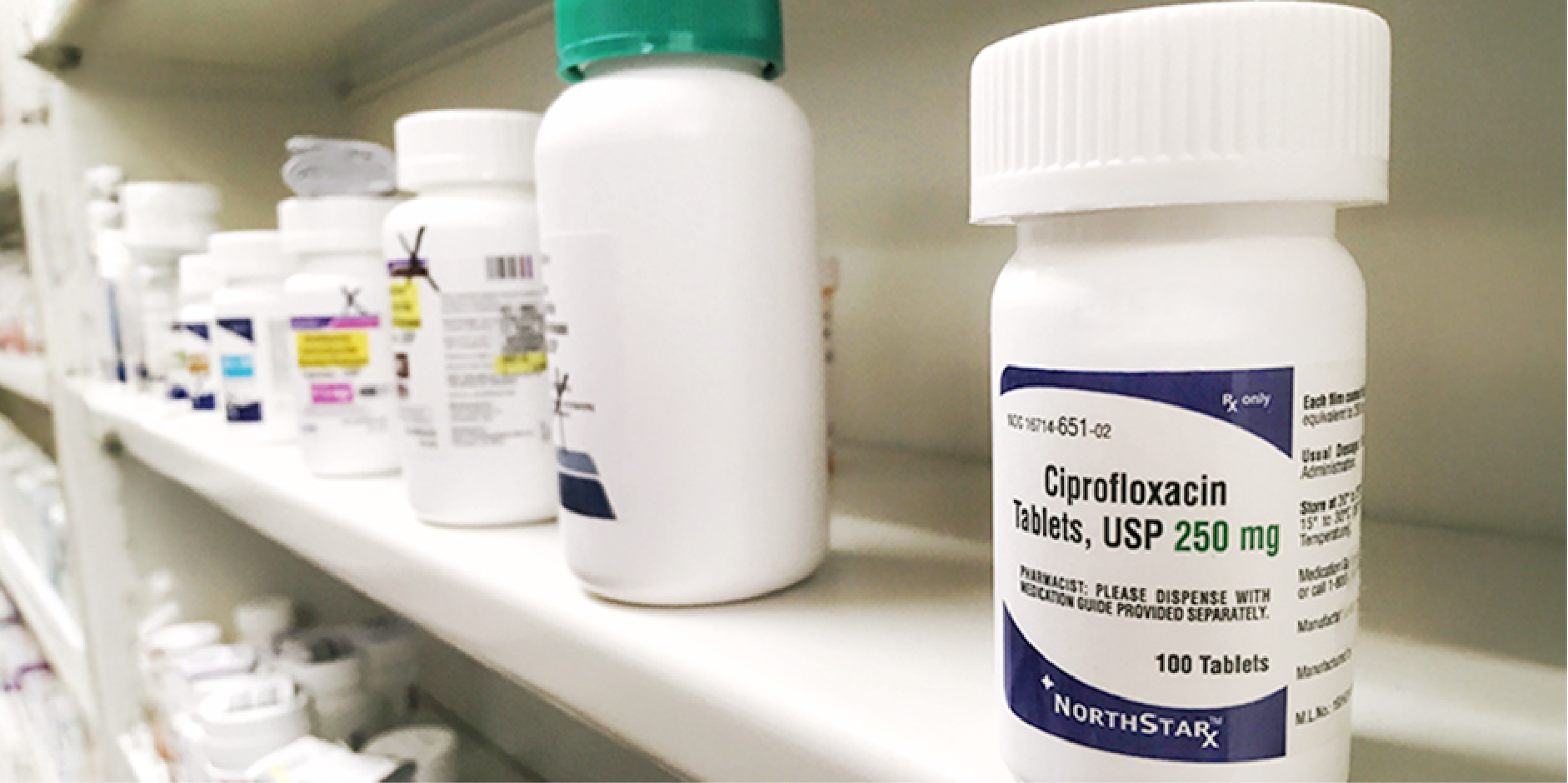 Inflammatory Bowel Disease_Management 10
Inflammatory Bowel Disease_Management 10Ciprofloxacin is commonly used in combination with other agents in the treatment of Crohn’s disease. As monotherapy, it is not consistently effective for the treatment of Crohn’s disease.
Metronidazole
Metronidazole is effective but considered only as an alternative agent because of potential adverse effects. This may be considered in selected patients with colonic disease (ie ileocolitis and colitis), those with resistant disease or patients who wish to avoid corticosteroids. This may be used in selected patients unresponsive to Sulfasalazine.
Corticosteroids
Oral corticosteroids remain the mainstay of treatment, especially in patients who are unresponsive to aminosalicylates or antibiotics, or for selected patients who present with more severe initial symptoms. These are primarily used to reduce the signs and symptoms of active luminal Crohn’s disease and to potentially induce clinical remission. An ileal-release steroid formulations are used for mild to moderate Crohn’s disease. Oral corticosteroids should not be used for long-term management due to side effects. One trial demonstrated that the combination of Sulfasalazine and Prednisolone has better effects than either agent alone. Budesonide is recommended for the induction of symptomatic remission in patients with active mild to moderate Crohn’s disease of the ileum and/or ascending colon.
Thiopurines
Example drugs: Azathioprine, Mercaptopurine
Thiopurines are considered as additional therapy to induction therapy with corticosteroids or Budesonide given if there are ≥2 inflammatory exacerbations in a 12-month period and tapering of steroid dose cannot be done. These may be considered in the treatment of active Crohn’s disease and as an adjunctive therapy for reducing immunogenicity associated with anti-TNF treatment. Thiopurine methyltransferase (TPMT) testing prior to using Azathioprine or Mercaptopurine in Crohn’s disease is recommended.
Methotrexate
Methotrexate is considered as additional therapy to induction therapy with corticosteroids or Budesonide in patients intolerant or unresponsive to thiopurine therapy, given that there are ≥2 inflammatory exacerbations in a 12-month period and tapering of steroid dose cannot be done. This may be considered in the treatment of active Crohn’s disease and as an adjunctive therapy for reducing immunogenicity associated with anti-TNF treatment.
Patients Not Responding to Initial Therapy
Patients should be evaluated within several weeks of starting initial therapy. In patients who do not respond, one may try a different agent for mild to moderate Crohn’s disease or may advance the treatment to medications used for moderate to severe Crohn’s disease. In patients who do not respond completely to first-line therapy, they may try symptomatic treatment with antidiarrheal agents. The active symptoms of patients with low risk of progression may be treated with antidiarrheals and dietary manipulation with careful monitoring of symptoms.
Refractory to Therapy
Refractory to therapy is defined as patients with Crohn’s disease who relapse while on treatment, who fail to respond to aminosalicylates, antibiotics or corticosteroids, or who fail to be tapered off from corticosteroids. They may be treated with immunosuppressants or biologic agents.
ACTIVE MODERATE TO SEVERE ILEAL/COLONIC CROHN’S DISEASE
Anti-Integrin Agents
Natalizumab
Natalizumab is effective in patients with moderate to severely active Crohn’s disease who are unresponsive to or are unable to tolerate the conventional Crohn’s disease treatment regimen.
Vedolizumab
Vedolizumab may be given for induction of response and remission in patients with moderately to severely active Crohn’s disease in whom conventional therapy and/or anti-TNF agents could not be tolerated or were ineffective. This may be given with or without an immunomodulator. This should be given as a planned course of treatment until treatment failure, including the need for surgery, or until 12 months after treatment initiation, whichever is shorter.
Corticosteroids
Systemic corticosteroids are used initially for the induction of clinical response and remission. Oral corticosteroids (Prednisone or Methylprednisolone) can be used for short-term treatment of signs and symptoms of moderate to severely active Crohn’s disease, while IV corticosteroids can be used for more severe disease.
Prednisolone
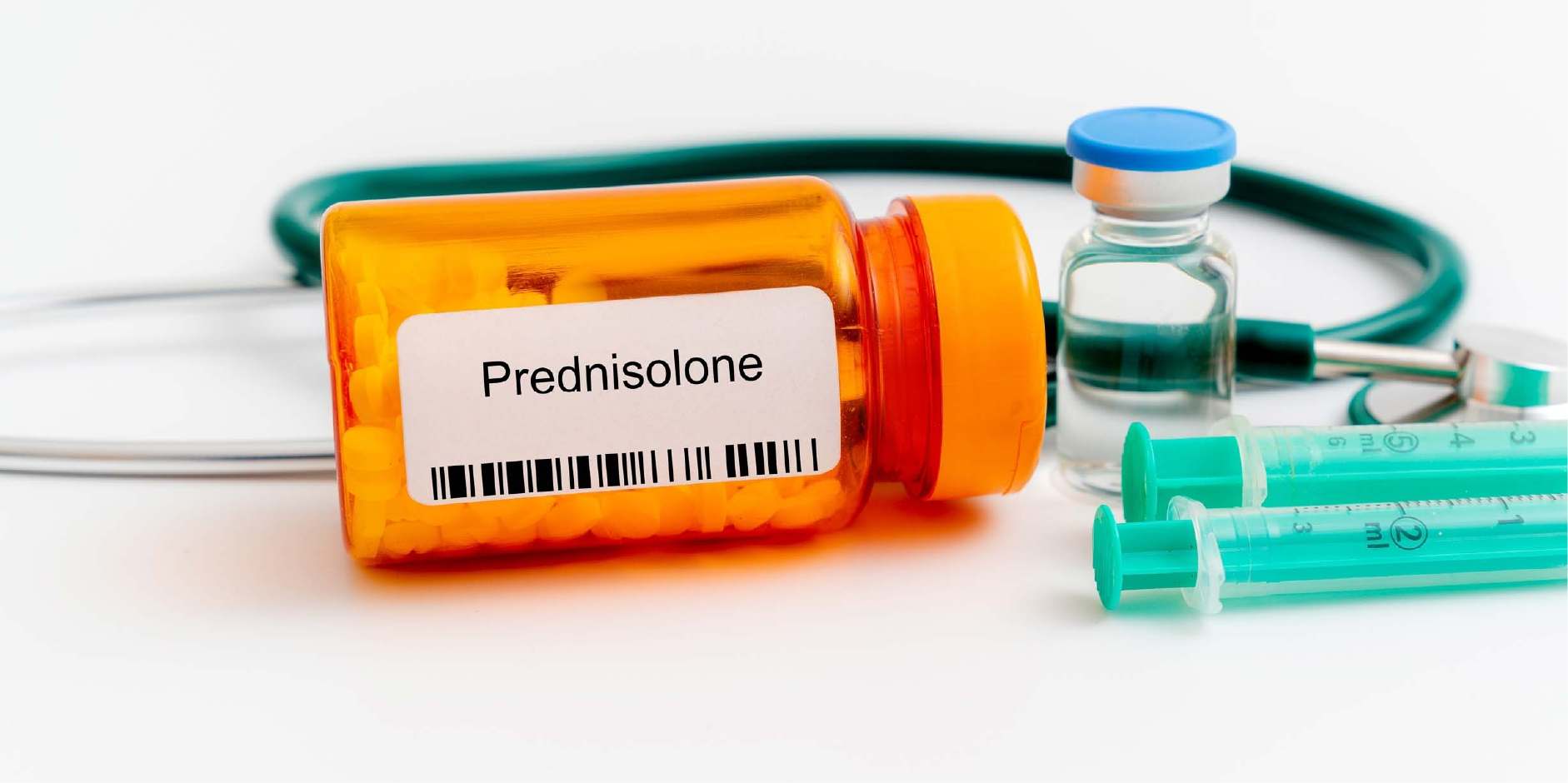 Inflammatory Bowel Disease_Management 11
Inflammatory Bowel Disease_Management 11Oral Prednisolone may be used in mild to moderate disease that has failed to respond to oral Mesalazine or in those with moderate to severe ileocolonic Crohn’s disease. Prednisolone should be reduced gradually according to severity and patient response, generally over 8 weeks. A more rapid reduction is associated with early relapse.
Steroid Treatment Response
Steroid-dependent is an inability to reduce the dose to <10 mg of Prednisolone equivalent within 12 weeks of starting or relapse within 12 weeks of stopping steroids. Steroid-refractory is an active disease despite adequate dose and duration of Prednisolone, ie up to 1 mg/kg/day for 4 weeks.
Methotrexate
Methotrexate may be considered for induction of remission in patients with moderate to severe Crohn’s disease. This is effective for chronic active disease and allows for steroid tapering in steroid-dependent patients. This may be used as adjunctive therapy and as steroid-sparing agent. Due to the slow onset of action, it is not effective in the short-term induction of active symptomatic disease.
Thiopurines
Example drugs: Azathioprine, Mercaptopurine
Thiopurines may be used in patients who remain symptomatic despite previous or current corticosteroid therapy. This may be used as adjunctive therapy and as steroid-sparing agents. Due to slow onset of action, these are not effective in the short-term induction of active symptomatic disease. These are not recommended for induction of remission in patients with active, symptomatic disease because of its slow onset of action (8-12 weeks).
Tumor Necrosis Factor (TNF) Inhibitors
Adalimumab
Adalimumab is recommended as treatment option in patients with moderately to severely active Crohn’s disease who are unresponsive to treatment despite adequate treatment with conventional therapy (corticosteroids, thiopurines, Methotrexate) particularly in patients with multiple risk factors for disease progression (eg younger age at diagnosis, extensive disease, ileal disease location, larger or deep ulcers on endoscopy). This may be given as monotherapy if patient is intolerant to combination with corticosteroids. This should be given as a planned course of treatment until treatment failure, including the need for surgery or until 12 months.
Certolizumab
Certolizumab is recommended as a treatment option in patients with moderate to severely active Crohn’s disease, who do not respond to conventional therapy (corticosteroids, thiopurines, Methotrexate) particularly in patients with multiple risk factors for disease progression (eg younger age at diagnosis, extensive disease, ileal disease location, larger or deep ulcers on endoscopy), or who are intolerant of or have contraindications to conventional therapy.
Infliximab
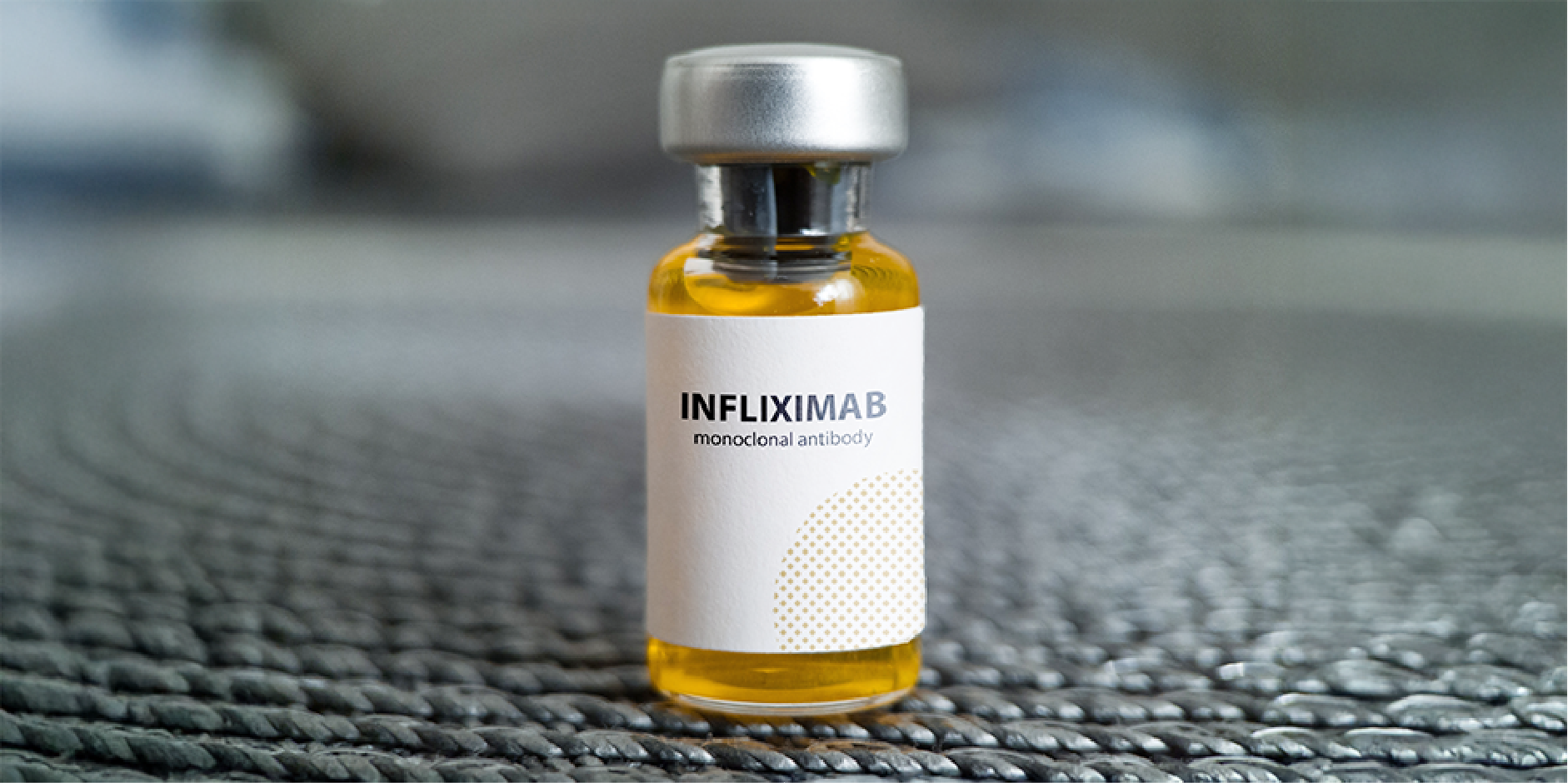 Inflammatory Bowel Disease_Management 12
Inflammatory Bowel Disease_Management 12Infliximab is recommended as a treatment option in patients with moderately to severely active Crohn’s disease who are unresponsive to treatment despite adequate treatment with conventional therapy (corticosteroids, thiopurines, Methotrexate) particularly in patients with multiple risk factors for disease progression (eg younger age at diagnosis, extensive disease, ileal disease location, larger or deep ulcers on endoscopy). A combination therapy with Azathioprine is superior to either agent alone in the treatment of patients with moderate to severely active Crohn’s disease who are unresponsive to first-line agents (corticosteroids, thiopurines, Methotrexate). This may also be given in patients who are intolerant of or have contraindications to conventional therapy. This should be given as a planned course of treatment until treatment failure, including the need for surgery, or until 12 months. Avoid Infliximab in patients with obstructive symptoms.
Biosimilar Anti-TNF Agents
Adalimumab-adaz, adbm, afzb, atto, or bwwd and Infliximab-abda, axxq, dyyb, or qbtx are effective in the treatment of Crohn’s disease patients with moderate to severe disease and can be used for de novo induction and maintenance therapy.
Monoclonal Antibodies
Guselkumab
Guselkumab is a monoclonal antibody targeting the p19 subunit of IL-23 and is a recommended treatment option for induction in patients with moderately to severely active Crohn’s disease.
Mirikizumab
Mirikizumab is a monoclonal antibody targeting the p19 subunit of IL-23 and is a recommended treatment option for induction in patients with moderately to severely active Crohn’s disease without prior exposure to anti-TNF agents or have failed previous treatment with other anti-TNF agents.
Natalizumab
Natalizumab is a humanized monoclonal antibody directed against alpha-4 integrin and may be used as an option for patients with Crohn’s disease who are anti-John Cunningham (JC) virus antibody negative. This is rarely used because of the risk for progressive multifocal leukoencephalopathy (PML) in patients with positive anti-JC virus status. This is not recommended in patients with impaired immunity, are on immunosuppressants or taking anti-TNF agents.
Risankizumab
Risankizumab is an anti-IL-23 monoclonal antibody indicated for the treatment of moderately to severely active Crohn’s disease. This is recommended over Ustekinumab in patients with moderate to severe Crohn’s disease and with previous exposure to anti-TNF therapy. The phase 3 clinical trials in the induction period (ADVANCE and MOTIVATE) and maintenance period (FORTIFY) support the efficacy and safety of Risankizumab in patients with moderately to severely active Crohn’s disease.
Ustekinumab
Ustekinumab is an anti-IL-12/23 and is the preferred biologic agent recommended for patients with moderately to severely active Crohn’s disease who are intolerant or have contraindications to conventional therapy or who have failed previous treatment with corticosteroids, thiopurines, Methotrexate, or anti-TNF agents, or in patients without prior exposure to anti-TNF agents. This should be given as a planned course of treatment until treatment failure, including the need for surgery, or until 12 months after treatment initiation, whichever is shorter.
Upadacitinib
Upadacitinib is an oral JAK inhibitor approved for the treatment of adults with moderate to severe Crohn’s disease who are unresponsive or intolerant to anti-TNF therapy.
MAINTENANCE OF CROHN’S DISEASE REMISSION
In clinical practice, the disease activity is evaluated by a combination of clinical symptoms (eg abdominal pain, stool frequency) and elevation of inflammatory biomarkers or disease activity which may be detected on radiologic or endoscopic assessments. Clinical remission is defined as a CDAI score of <150 and the patient is asymptomatic or without any symptomatic inflammatory sequelae (eg abdominal pain, increased stool frequency). Endoscopic remission is the absence of ulceration with minimal mucosal abnormalities on ileocolonoscopy. Mucosal healing, which is the target goal for therapy, is defined as the absence of ulceration as visualized during endoscopy. Histologic remission is the absence of inflammatory cells particularly neutrophils on mucosal biopsy. Surgical remission is present in patients who are status post-surgery (eg ileocolonic resection) without residual active disease during postoperative endoscopic evaluation.
The efficacy of maintenance therapy depends on whether remission was achieved by medication or surgery, risk of relapse and site of the disease. The maintenance of remissions has been shown to reduce hospitalizations and need for surgery beyond 1 year, as well as improve the quality of life of patients. Patients are said to be steroid dependent and are not considered to be in remission if they require the use of conventional corticosteroids to achieve clinical well-being. Consider escalating maintenance therapy in relapsing patients to avoid disease progression. Smoking cessation may be the most important factor in maintaining remission.
Aminosalicylates
Mesalazine
Oral Mesalazine is not recommended for long-term treatment as it has not shown effectiveness for maintenance of medically-induced remission in Crohn’s disease patients. Mesalazine may be an option in preventing postoperative recurrence in patients with isolated ileal resection but has limited benefit.
Sulfasalazine and Olsalazine
There are not enough data showing the effectivity of Sulfasalazine and Olsalazine in the maintenance of medically induced remission of Crohn’s disease patients and are not recommended for long-term treatment.
Antibiotics
There is limited data on the effect of antibiotics for the maintenance of remission. Metronidazole may be given after ileocolonic resections to reduce the likelihood of recurrence.
Corticosteroids
Corticosteroids are ineffective for maintenance in Crohn’s disease patients with medically induced remission and should not be used for long-term treatment.
Budesonide
Budesonide may be effective for short-term maintenance of remission in patients with mild to moderate ileal and/or right colonic disease. Ileal-release Budesonide is not recommended for maintenance of remission in patients with mildly to moderately active ileocecal disease. This should not be used beyond 4 months to maintain remission.
Methotrexate
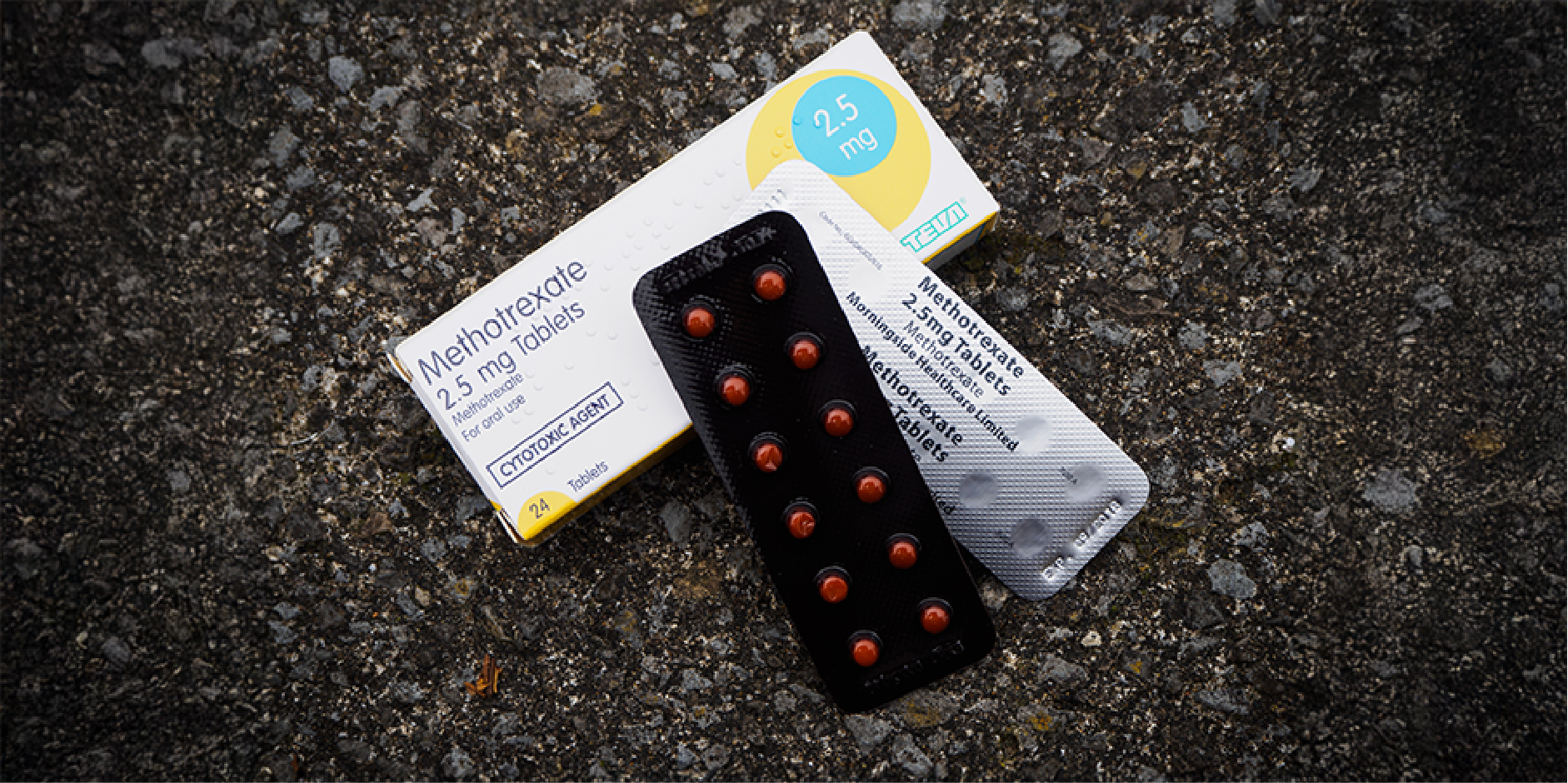 Inflammatory Bowel Disease_Management 13
Inflammatory Bowel Disease_Management 13Methotrexate is recommended as maintenance therapy for remissions of Crohn’s disease in patients whose active disease responded to Methotrexate, who are intolerant or unresponsive to Azathioprine/Mercaptopurine therapy, who have contraindications against Azathioprine/Mercaptopurine (ie deficient TPMT activity, history of pancreatitis) and with steroid-dependent Crohn’s disease (administered parenterally).
Methotrexate is an effective corticosteroid-sparing agent for the maintenance of Crohn’s disease remission. This may be considered in those who are intolerant of or who have failed Azathioprine or Mercaptopurine therapy. Parenteral route is most effective in patients with extensive small bowel disease or with risk factors for malabsorption. The potential toxicity and alternative options, including surgery, need to be discussed with the patient before deciding on use.
Thiopurines
Example drugs: Azathioprine, Mercaptopurine
Thiopurines may be considered after ileocolonic resections to reduce the likelihood of recurrence. These are considered first-line agents for patients with severe relapse or frequently relapsing disease, those who require ≥2 corticosteroid courses within 12 months and those with relapses within 6 weeks of corticosteroid withdrawal. Thiopurines may be used as monotherapy for patients previously given conventional corticosteroids, those who have been given other induction therapy options aside from thiopurines, or those who have achieved sustained remission on combination treatment. This may be considered for maintenance of remission in patients with moderately to severely active Crohn’s disease who had induction with corticosteroids. Azathioprine is effective for patients whose active disease responded to Infliximab in steroid-naive patients. This is proven to be effective in maintaining remission regardless of disease distribution.
Tumor Necrosis Factor (TNF) Inhibitors
Tumor necrosis factor (TNF) inhibitors are considered in patients with poor prognostic factors or a severe disease course. These are recommended in the maintenance of anti-TNF-induced remission. A combination therapy with anti-TNF agents and thiopurines or Methotrexate may be considered in maintaining anti-TNF-induced remission to avoid development of immunogenicity and loss of response. These are shown to improve short-term efficacy compared with monotherapy. Continuation of anti-TNF therapy should be individualized and risks and benefits considered as evidence is insufficient to recommend continuing or withdrawing anti-TNF therapy in Crohn’s disease patients who have achieved long-term remission. These are first-line prophylactic treatments in patients at high risk for postoperative recurrence or in patients who have tried and are unresponsive or intolerant of thiopurines. These are most effective treatment to prevent postoperative recurrence and is recommended to be started within 4 weeks of surgery in high-risk patients.
Adalimumab
Adalimumab is recommended as a long-term regimen used to prevent relapses in patients who were responsive to induction therapy with Adalimumab. Disease reassessment is recommended for patients undergoing Adalimumab therapy for >1 year.
Infliximab
Infliximab is best used as part of a treatment strategy including other options. Infliximab monotherapy and combined therapy with Azathioprine are superior to Azathioprine alone for maintenance of patients with moderate to severely active Crohn’s disease who are unresponsive to first-line agents (corticosteroids, thiopurines, Methotrexate). This should be considered after ileocolonic resections to reduce the likelihood of recurrence. Scheduled infusions have been effective at maintaining remissions in both luminal and fistulizing Crohn’s disease. A scheduled maintenance therapy (eg every 8 weeks) is less immunogenic and has been associated with prolonged mucosal healing, compared to episodic dosing. A subcutaneous administration is recommended as an option for maintenance of remission in patients with moderately to severely active Crohn’s disease who responded to IV induction with Infliximab.
Other Immunosuppressants
Certolizumab, Guselkumab, Mirikizumab, Natalizumab, Risankizumab, Upadacitinib, Ustekinumab and Vedolizumab are effective for maintaining remissions. Natalizumab may be used for maintenance of Natalizumab-induced remission provided that the serum antibody to John Cunningham (JC) virus is negative. Testing for the anti-JC virus must be done every 6 months, and treatment must be discontinued when positive. These should not be used in combination with other immunosuppressants due to the increased risk of progressive multifocal leukoencephalopathy (PML). Guselkumab is recommended for maintenance of Guselkumab-induced remission in patients with moderately to severely active Crohn’s disease. Mirikizumab is recommended for maintenance of Mirikizumab-induced remission in patients with moderately to severely active Crohn’s disease. Risankizumab is recommended for maintenance of Risankizumab-induced remission. Upadacitinib is recommended for maintenance of Upadicitinib-induced remission for patients with moderate to severe Crohn’s disease with prior exposure to anti-TNF drugs. Ustekinumab is recommended for maintenance of Ustekinumab-induced remission. Vedolizumab is recommended for maintenance of Vedolizumab-induced remission. This may be used as monotherapy or in combination with thiopurines or Methotrexate to avoid development of immunogenicity and loss of response.
ACTIVE PERIANAL CROHN’S DISEASE
Perianal disease is often associated with Crohn’s disease located elsewhere in the GI tract, which should be treated appropriately. The initial aim should be to treat active disease and sepsis. Non-suppurative, perianal fissuring or chronic fistulization may be treated medically with antibiotics or immunosuppressants. Antibiotics are used in the treatment of Crohn’s disease complications (eg perianal disease, presence of fistulas, bacterial colonization in colonic stricture). Antibiotics combined with biologic agents are preferred over a biologic agent alone for inducing fistula remission in outpatients with Crohn’s disease and active perianal fistula with no perianal abscess. This may be considered to improve clinical response in perianal fistulizing Crohn’s disease.
Adalimumab and Certolizumab
Adalimumab and Certolizumab may be effective in the treatment of perianal fistulas in Crohn’s disease. Adalimumab may be used for both induction and maintenance of remission in complex perianal fistulas in Crohn’s disease.
Azathioprine or Mercaptopurine
Azathioprine or Mercaptopurine may be effective for simple perianal fistulae or enterocutaneous fistulae when distal obstruction and abscess have been ruled out. As monotherapy or in combination with anti-TNF agents, these may be used in the initial treatment of rectovaginal fistulas.
Infliximab
Infliximab has shown effectivity and may be considered in the treatment and maintenance of remission of complex perianal fistulas, and may be effective in the treatment of enterocutaneous and rectovaginal fistulas in Crohn’s disease. This may be a treatment option for patients with fistulizing Crohn’s disease who are unresponsive to conventional therapy (antibiotics, immunosuppressants and drainage), or intolerant or have contraindications to conventional therapy. A combination with antibiotics is more effective in the treatment of perianal fistulas than Infliximab alone. The efficacy is increased with seton placement and should be considered in perianal fistula treatment. This should be given as a planned course of treatment until treatment failure, including the need for surgery or until 12 months.
Metronidazole
Metronidazole may be considered for simple perianal fistulae. This may be used alone or in combination with Ciprofloxacin for non-suppurative perianal complications. A continuous therapy may be necessary to prevent recurrent drainage. The safety of long-term use has not been established. Monitor the patient for evidence of peripheral neuropathy.
Tacrolimus
Tacrolimus is recommended for treatment of fistulizing Crohn’s disease. This may be considered for short-term treatment of perianal and cutaneous fistulas in Crohn’s disease.
Other Immunosuppressants
Upadacitinib, Ustekinumab and Vedolizumab may be considered for induction of remission in patients with perianal fistulizing Crohn’s disease.
Other Therapy Option
Mesenchymal Stem Cell (MSC) Administration
Mesenchymal stem cell administration is a safe and effective option for selected Crohn’s disease patients with medically and surgically refractory anorectal fistulas. This makes use of allogeneic or autologous MSCs derived from bone marrow or adipose tissue.
HOSPITAL MANAGEMENT OF SEVERE TO FULMINANT CROHN’S DISEASE
Patients should be hospitalized if they continue to suffer CD-related symptoms despite oral corticosteroids or immunosuppressants (eg Infliximab, Adalimumab), or those who present with high fever, vomiting, evidence of obstruction, cachexia, rebound tenderness or evidence of abscess.
Supportive Therapy
If a patient is unable to maintain nutritional requirements for 5 to 7 days, nutritional support via elemental feeding or parenteral hyperalimentation is indicated. Dehydrated patients should receive fluid and electrolytes as necessary. Transfusions may be necessary for anemia and active hemorrhage. The use of opiates and anticholinergics should be limited and antidiarrheal agents should be avoided. Prophylaxis for venous thromboembolism is recommended. Oral feeding should continue as tolerated in patients without evidence of intestinal obstruction. Severely ill patients or those with obstruction should have bowel rest and parenteral support.
Pharmacological Therapies
Antibiotics
If an inflammatory mass is present, broad-spectrum antibiotics should be given along with IV corticosteroids.
Ciclosporin (IV)
Ciclosporin may be an option for patients who do not respond to parenteral corticosteroids. This has a faster onset of action compared with Azathioprine, Mercaptopurine and Methotrexate. Relapses frequently occur with discontinuance of its use.
Corticosteroids (IV)
Corticosteroids may be started as a continuous infusion once an abscess has been excluded or if the patient has been receiving oral corticosteroids. This may be used to control inflammatory burden while assessing steroid-sparing treatment options.
Tumor Necrosis Factor (TNF) Inhibitors
Tumor necrosis factor inhibitors may be given to treat severely active Crohn’s disease. This may be an option for patients who do not respond to parenteral corticosteroids. Infliximab may be given to treat fulminant Crohn’s disease.
Nonpharmacological
Patient Education
Ulcerative
Colitis
Audiovisual
or suitable written information on inflammatory bowel disease should be given. One
should stress the importance of adherence to therapy and educate and support
patients to encourage treatment compliance. Avoid the use of NSAIDs, which can
exacerbate disease activity.
 Inflammatory Bowel Disease_Management 14
Inflammatory Bowel Disease_Management 14Crohn’s Disease
Audiovisual or suitable written information on inflammatory bowel disease should be given. One should stress the importance of adherence to therapy and educate and support patients to encourage treatment compliance. Avoid the use of NSAIDs, which can exacerbate disease activity.
Nutrition and Lifestyle Modification
Ulcerative Colitis
Cessation of smoking may prevent flaring of symptoms in patients with ulcerative colitis. Stress management programs may aid in the patient's overall disease outlook. Patients with ulcerative colitis are prone to malnutrition and may suffer detrimental effects from it. Decrease the fiber intake during increased disease activity to reduce frequency of bowel movements. High-fiber diets to be given only to those with involvement limited to the rectum. Protein intake should be increased to 1.2 to 1.5 g/kg/day in adults during active inflammatory bowel disease. Reduction in the intake of red and processed meat may be considered for the maintenance of remission in patients with ulcerative colitis.
Nutritional support is adjunctive in patients who are malnourished or have a difficult time maintaining normal nutritional status and should also be considered in those with intestinal partial obstruction awaiting surgery1. Exclusive enteral nutrition or partial enteral nutrition is not recommended as induction therapy in patients with ulcerative colitis. Curcumin may be used under clinical supervision as an adjunct therapy to Mesalamine for the induction of remission in patients with mild to moderate ulcerative colitis and may also be used for maintenance of remission. QuingDai (also known as indigo naturalis) with or without Curcumin may be considered as an adjunct for the induction of remission in patients with mild to moderate ulcerative colitis. Prebiotics and probiotics have no clear evidence on their role as adjunctive therapy. Routine multivitamin supplementation for all patients, and routine vitamin D and calcium supplementation for those under steroid therapy should be given. Iron supplementation, either oral or parenteral, should also be given for those with chronic iron deficiency.
 Inflammatory Bowel Disease_Management 15
Inflammatory Bowel Disease_Management 15Crohn’s Disease
Smoking cessation should be strongly advised. Stress management programs may aid in the patient's overall disease outlook. Patients are prone to malnutrition and may suffer detrimental effects from it. Decrease the fiber intake during increased disease activity to reduce frequency of bowel movements. Diet which are low in bulking fiber in patients with structuring Crohn’s disease and obstructive symptoms (eg abdominal distention, abdominal pain, absence of gas and stool passage, N/V) reduces the risk of developing intestinal obstruction. Placing the patient on NPO, or giving only a liquid diet or pre-digested formula may decrease obstructive symptoms. Protein intake should be increased to 1.2 to 1.5 g/kg/day in adults during active inflammatory bowel disease.
Elemental or polymeric diets may be used to induce remission in some patients with active Crohn’s disease who have contraindications to corticosteroids or where patients prefer to avoid corticosteroids. This may reduce inflammatory features of active Crohn’s disease; although, long-term course of the disease is not altered. The cost and compliance may be limiting factors. This may be attempted as adjunctive therapy to support patient’s nutrition. Diet-based strategies in combination with careful monitoring for inadequate symptom relief, worsening inflammation or disease progression may be considered in adult patients with mild Crohn’s disease and low risk for progression.
Exclusive enteral nutrition, which is a treatment replacing all food with oral nutrition supplements usually for 6-8 weeks, is used as disease-modifying therapy for growth failure1. This is effective for induction of clinical and endoscopic remission in patients with mild to moderate Crohn’s disease. This may be considered to treat inflammatory strictures in patients with Crohn’s disease. This may reduce the inflammatory burden in patients with Crohn’s disease who are waiting for surgery and may prevent the planned surgery when given for at least 2 weeks. Partial enteral nutrition, which replaces a proportion of food with oral nutritional supplements when provided in high volumes, could improve disease activity. This should be considered for the maintenance of remission in Crohn’s disease and as an adjunct to medical therapy. This helps in corticosteroid weaning in refractory Crohn’s disease. The use ≤50% partial enteral nutrition is not recommended for the induction of remission in patients with Crohn’s disease. Crohn’s disease exclusion diet with partial enteral nutrition may be considered in patients with mild to moderate Crohn’s disease. A 6-week induction therapy comprises of 50% partial enteral nutrition using a polymeric oral nutritional supplement, a mandatory inclusion of five foods of specified dose to be eaten daily and an allowance of 14 foods that may be eaten while other foods are not allowed. A provision of preoperative nutrition with at least 4 weeks of exclusive enteral nutrition is recommended in patients with Crohn’s disease who are waiting for surgical intervention, to reduce the risk of complications. If exclusive enteral nutrition is not feasible, oral nutritional supplementation for at least 10 days may be considered.
Nutritional support is adjunctive in patients who are malnourished or have a difficult time maintaining normal nutritional status and should also be considered in those with intestinal partial obstruction awaiting surgery1. Prebiotics and probiotics have no clear evidence on their role as adjunctive therapy. Routine multivitamin supplementation for all patients and routine vitamin D and calcium supplementation for those under steroid therapy should be given. Iron supplementation, either oral or parenteral, should be given for those with chronic iron deficiency. Vitamin B12 supplementation should also be given for deficiency states at 1,000 mcg SC every month.
1Various enteral nutritional products are available. Please see the latest MIMS for specific formulations and prescribing information.
Surgery
Ulcerative Colitis
Surgical
resection is considered curative in cases of ulcerative colitis.
Absolute
Indications
Absolute
indications for surgical resection in ulcerative colitis include exsanguinating
hemorrhage, perforation or impending perforation, persistent colonic
dilatation, worsening peritonitis, the presence of pneumatosis coli and documented
or strongly suspected carcinoma.
Other
Indications
Other
indications for surgical resection in ulcerative colitis include severe colitis
with or without toxic megacolon (dilatation of the transverse colon >5.5 cm
or cecum >9 cm) unresponsive to conventional maximal medical therapy, less
severe but medically intractable symptoms or intolerable medication side
effects, or those who fail to show clinical improvement after 3 to 5 days of
medical therapy, patients with chronic ulcerative colitis who develop
strictures and growth failure in children despite maximal nutritional and
medical therapy.
Surgical
Options
Laparoscopic
surgery is the preferred approach in patients with medically refractory ulcerative
colitis. This is associated with faster recovery, fewer adhesions and
incisional hernias, lower intra- and postoperative morbidity, shorter hospital stays,
improved female fecundity and better cosmesis. Temporary ileostomy is one of
the surgical options. Segmental colectomy may be an option for patients with
higher operative risk or poor functional status. Subtotal colectomy with
ileostomy followed by ileal pouch-anal anastomosis (IPAA) construction and then
finally followed with ileostomy closure is the preferred semi-elective
procedure for patients with acute severe ulcerative colitis. This is safe and
effective in patients with acute severe ulcerative colitis with massive
colorectal hemorrhage or patients not responding to medical therapy. Total
abdominal colectomy with end ileostomy is recommended for patients with severe
medically refractory ulcerative colitis, fulminant colitis, toxic megacolon or
colonic perforation. A modified two-stage IPAA or total abdominal colectomy with
end ileostomy with rectum left in situ followed by restorative completion
proctectomy and IPAA reconstruction with ileostomy take-down may be a surgical
option in patients with medically refractory ulcerative colitis. Proctocolectomy
without ileostomy may be a surgical option for patients with refractory and
corticosteroid-dependent. Total proctocolectomy with permanent or end ileostomy.
This is recommended for ulcerative colitis patients with visible dysplasia not
amenable to endoscopic excision or colorectal carcinoma in order to remove all
at-risk tissue. This is an alternative procedure for patients with refractory and
corticosteroid-dependent ulcerative colitis. This may be an option for patients
with contraindications to IPAA. IPAA procedure is the gold standard for surgery
after total proctocolectomy for medically refractory ulcerative colitis. A staged
proctocolectomy wherein subtotal colectomy is done initially followed either by
IPAA or permanent ileostomy is recommended in surgical treatment of patients with
acute severe colitis, patients taking ≥20 mg Prednisolone daily for >6 weeks,
and patients treated with anti-TNF. Ileo-rectal anastomosis (IRA) may be an
option for patients with ulcerative colitis with minimally affected rectum. This
is associated with better functional outcomes compared to IPAA but with higher
risk for rectal dysplasia, cancer and dysplasia or cancer recurrence.
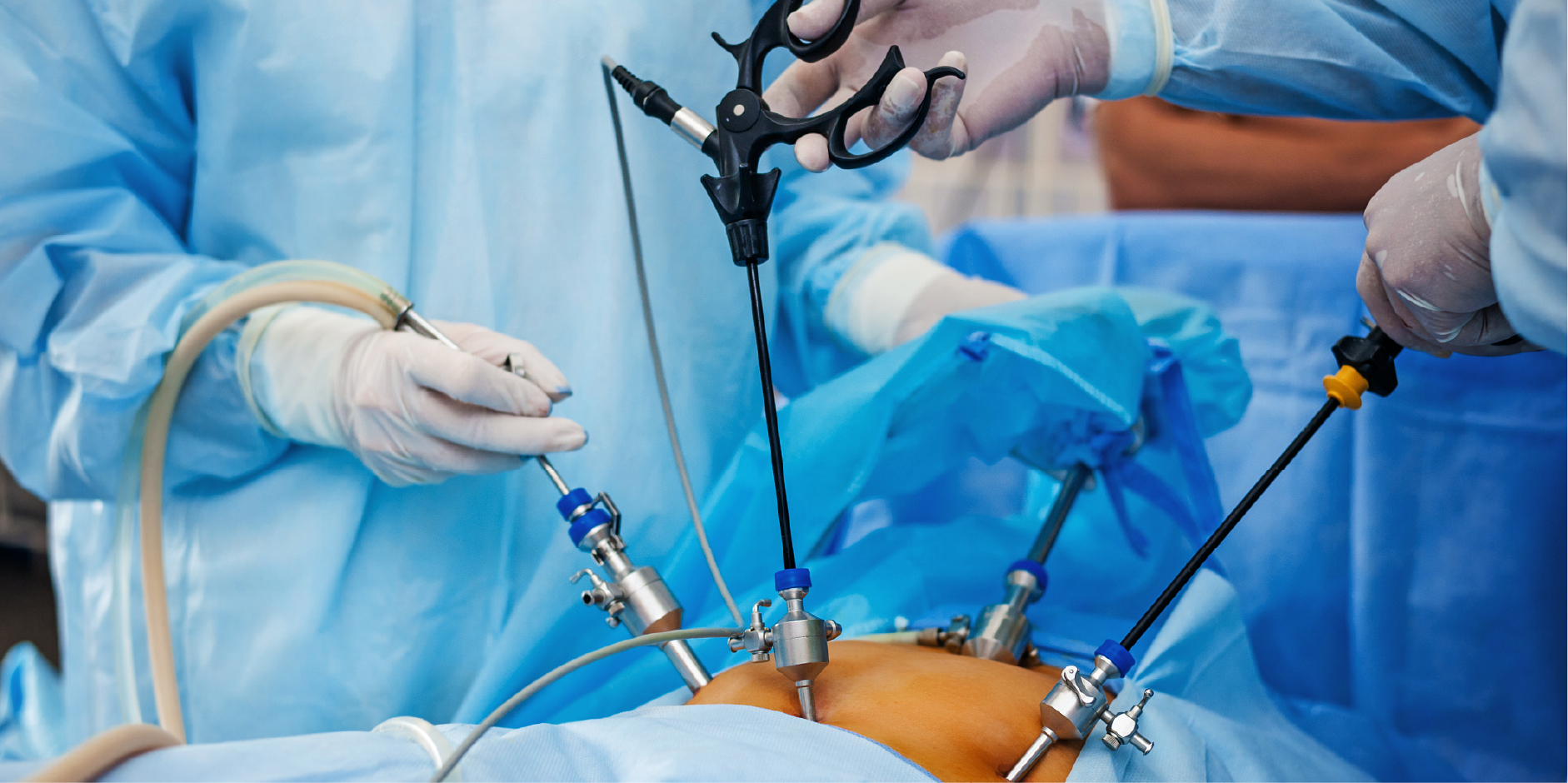 Inflammatory Bowel Disease_Management 16
Inflammatory Bowel Disease_Management 16Crohn’s Disease
Surgery is rarely curative for Crohn’s disease cases because the condition may recur, but those who undergo it may have long-lasting remission. This may be considered if the disease is limited to the distal ileum or short segment of bowel. This may also be considered in children or adolescents whose disease has been diagnosed early, with the disease limited to the distal ileum, with potential growth impairment even with medications, and disease is refractory to conventional therapy. The 10-year cumulative risk of major abdominal surgery in Crohn’s disease is 40-55% and the 10-year risk of a second resection after the first is 35%. Steroids should be tapered before surgery to reduce the risk of complications.
Indications
The indications for surgery in Crohn’s disease include failed medical management, worsening of symptoms or side effects of medication, those with signs of impending perforations or actual perforations, presence of intestinal strictures or obstructions, or tender abdominal mass, presence of massive hemorrhage, abscess not amenable to percutaneous drainage, presence of perianal, rectovaginal, intestinal small bowel or sigmoid-gynecological fistulas and presence of skin tags or hemorrhoids.
Surgical Options
The presence of acute suppuration is an indication for surgical drainage with or without placement of setons. Draining setons may be used for long-term disease control in patients with fistulizing anorectal Crohn’s disease. This will help resolve inflammation and prevent anorectal sepsis by maintaining the external opening and allowing drainage. In patients with Crohn’s disease who developed intraabdominal abscess measuring >2 cm, a drainage procedure either radiographically or surgically and treatment with antibiotics may be considered and administration of immunomodulators only once drainage is achieved. A combination therapy with biologic agents and seton drainage has been shown to improve fistula healing rates and is more cost-effective. A lay-open fistulotomy may be an option for selected Crohn’s disease patients with symptomatic, simple or uncomplicated low anal fistulas (<30% external anal sphincter involvement) without proctitis.
Laparoscopic surgery is the recommended procedure for Crohn’s disease patients requiring surgery. The creation of a temporary stoma or diverting ileostomy should be considered in patients on steroids that cannot be withdrawn or significantly reduced before surgery or in patients with multiple risk factors (eg smoking, weight loss, steroid use). Laparoscopic resection of non-stricturing active disease of the terminal ileum (<40 cm) may be an alternative to Infliximab therapy. Stapled side-to-side anastomoses should be considered in small bowel or ileocolic resection for Crohn’s disease. Kono-S anastomosis, a hand-sewn, anti-mesenteric, functional, end-to-end anastomosis, may be an alternative surgical approach to other types of anastomoses after ileocecal resection. This reduces anastomotic Crohn’s disease recurrence after ileocecal resection. Laparoscopic resection of stricturing fibrotic disease is the preferred treatment option in patients with localized ileocecal Crohn’s disease. Resection is recommended for patients with symptomatic small bowel or anastomotic strictures which are not amenable to medical therapy and/or endoscopic dilatation.
Endoscopic dilatation may be an option for patients with short-segment (<5 cm), non-inflammatory, symptomatic small bowel or anastomotic strictures without associated penetrating disease such as abscess or fistula. Strictureplasty may be a safe option for the management of small bowel strictures and may be preferred over resection of long segments of bowel. This is the preferred procedure for patients with multiple strictures separated by longer segments of grossly normal small bowel. Defunctioning ileostomy to divert fecal stream may be performed on patients with non-acute refractory Crohn’s disease to allow for remission together with intensified medical therapy and avoid the need for colectomy.
Total or subtotal colectomy with end ileostomy is the emergency procedure of choice for severe acute and refractory Crohn's colitis. A segmental colectomy is indicated for Crohn’s disease patients with a single involved colonic segment. Total colectomy with ileoproctostomy is indicated for Crohn’s disease patients with ≥2 involved colonic segments. Total proctocolectomy with end ileostomy or proctectomy with colostomy creation is indicated for patients with Crohn’s disease involving the rectum. Restorative proctocolectomy with IPAA may be an option for patients with refractory pancolonic Crohn’s disease without perianal or small bowel disease.
For patients with complex perianal fistulae, surgical options include advancement flaps, ligation of intersphincteric fistula tract (LIFT) or fibrin glue. Endorectal advancement flaps and LIFT are surgical options for well-controlled Crohn’s disease patients with fistula-in-ano without sepsis. Fecal diversion with or without proctectomy may be an option for patients with severe anorectal fistulizing Crohn’s disease who are not adequately responsive to medical therapy, local surgical intervention or long-term seton drainage, to control anorectal sepsis and improve incontinence symptoms and overall quality of life. A permanent fecal diversion with proctectomy is recommended in patients with concomitant colonic disease, persistent proctitis or anorectal sepsis, previous temporal fecal diversion, >2 previous seton placements, fecal incontinence, and anal canal stenosis.
Postoperative Recurrence
The 5-year rate of symptomatic postoperative recurrence is approximately 50%. The predictors of early postoperative recurrence include smoking, absence of prophylactic therapy, perianal location, previous intestinal surgery, resected specimen with granulomas, and penetrating disease at index surgery. Patients with lower risk for post operative recurrence include non-smokers, patients >59 years of age, first surgery for Crohn’s disease, short stricturing Crohn’s disease (<10-20 cm) and long-standing history of Crohn’s disease (>10 years). The forms of recurrence are: Clinical recurrence which occurs in 20-37% of patients one-year postsurgery and in 34-86% of patients within 3 years and is based on the presence of signs and symptoms of disease; endoscopic recurrence which may range from 70-90% at one year and preceding clinical recurrence; histologic recurrence which is the earliest form of recurrence; late recurrence which defined by the need for a second surgery; and surgical recurrence which is defined by the need for a second surgery. This is diagnosed by ileocolonoscopy performed within 6 months following surgery. This is prevented with thiopurines, anti-TNFs, high-dose Mesalazine, or imidazole antibiotics. Anti-TNF therapy is recommended to prevent postoperative endoscopic recurrence in patients with high-risk Crohn’s disease or who have tried and failed or are intolerant of thiopurines. Vedolizumab is recommended in patients with high-risk Crohn’s disease to prevent postoperative recurrence. Imidazole antibiotics (eg Metronidazole) may be considered after small intestinal resection in patients with Crohn’s disease to prevent recurrence or for patients who cannot tolerate anti-TNF therapy. A combination therapy with Metronidazole for three months and Azathioprine for 12 months has been shown to reduce endoscopic recurrent disease at one-year postsurgery compares to patients receiving Metronidazole alone.
Prevention
Ulcerative Colitis
Vaccinations
Consider administration of the following vaccines prior to therapy with
immunosuppressants: Influenza, pneumococcal, recombinant herpes zoster,
tetanus, hepatitis B, meningococcal and varicella. These are preferably
administered when the patient is not on corticosteroids or during the lowest
corticosteroid dose as corticosteroids are associated with a lower
vaccine-induced humoral immune responses for certain vaccine. Respiratory
syncytial virus (RSV) vaccine is recommended in all adults ≥60
years of age with ulcerative colitis. Once immunosuppressants are initiated,
avoid vaccinations with live vaccines.
Crohn’s Disease
Vaccinations
Consider administration of the following vaccines prior to therapy with
immunosuppressants: Influenza, COVID-19, pneumococcal, recombinant herpes
zoster, hepatitis B, HPV, meningococcal and varicella. These are preferable
administered when not on corticosteroids or during the lowest corticosteroid
dose as corticosteroids are associated with a lower vaccine-induced humoral
immune responses to certain vaccines. Once immunosuppressants are initiated,
avoid vaccinations with live vaccines.
